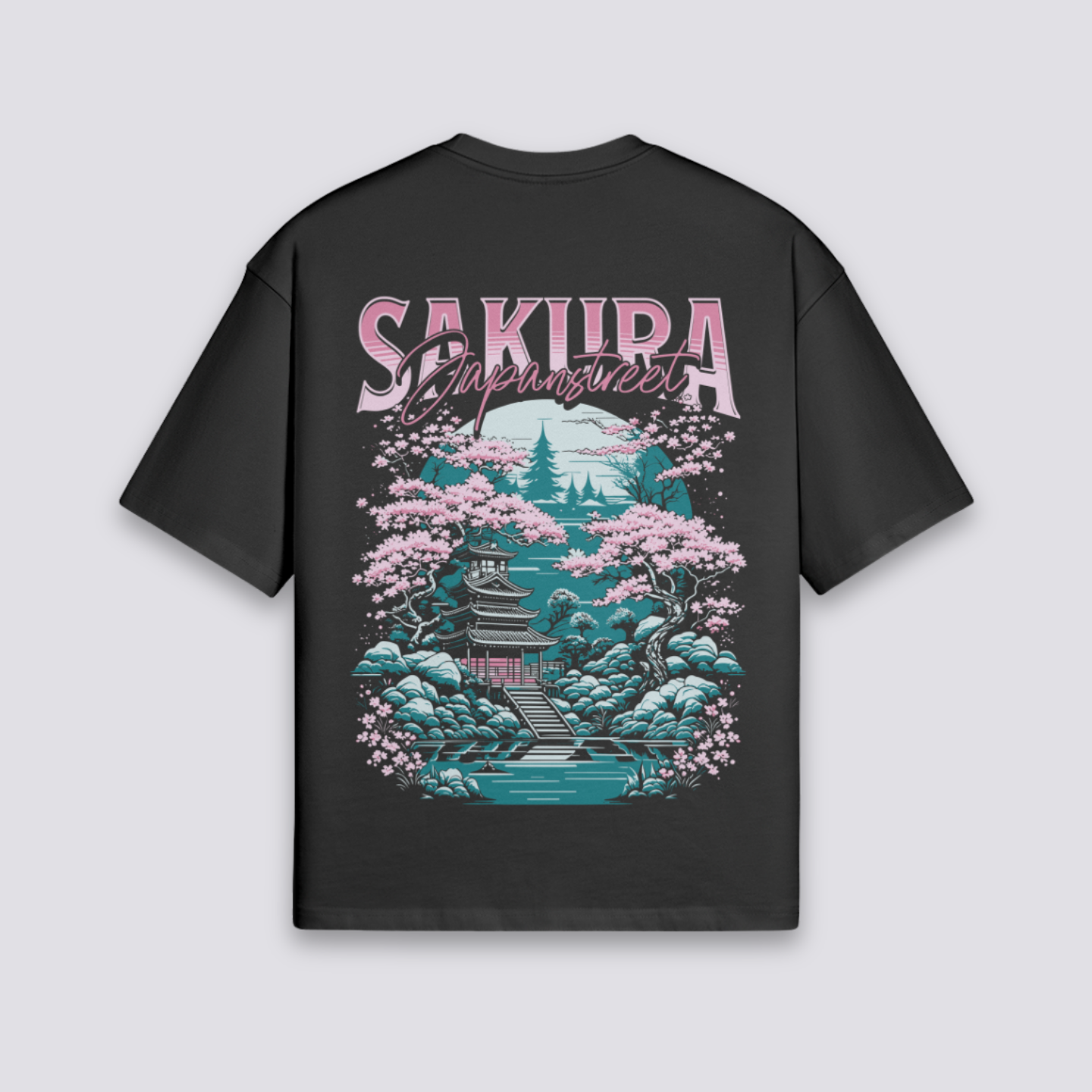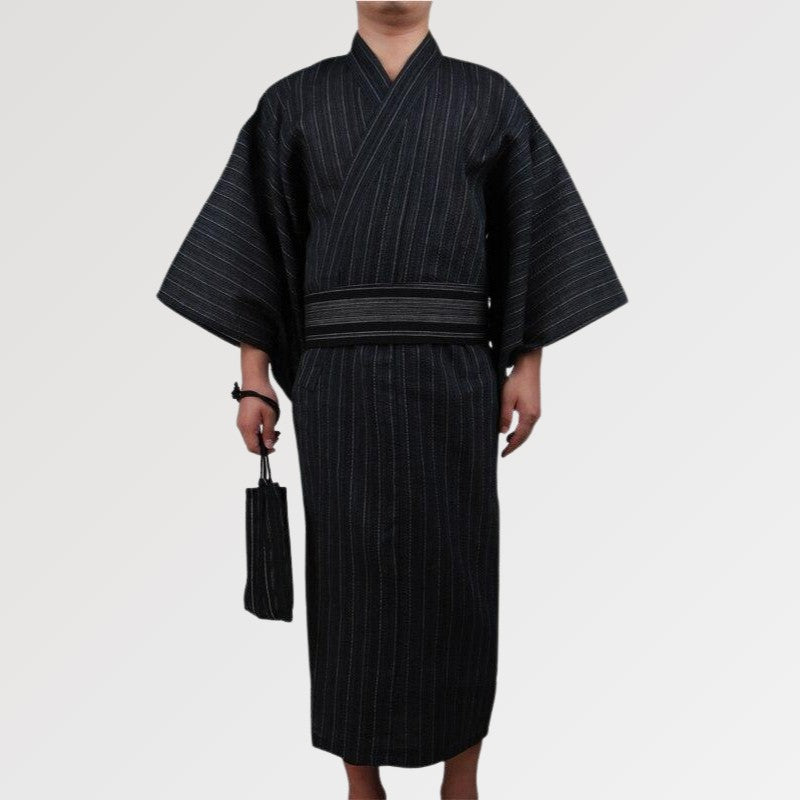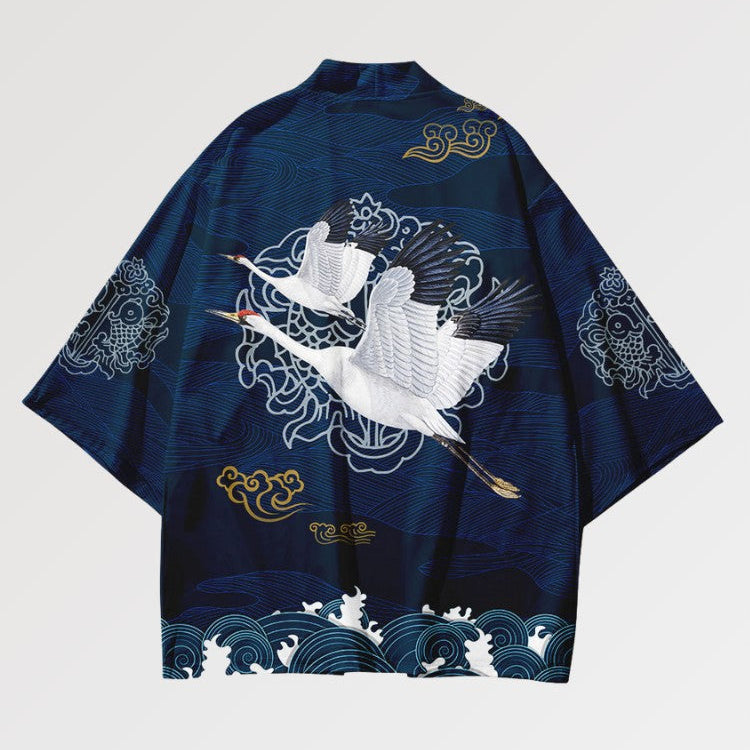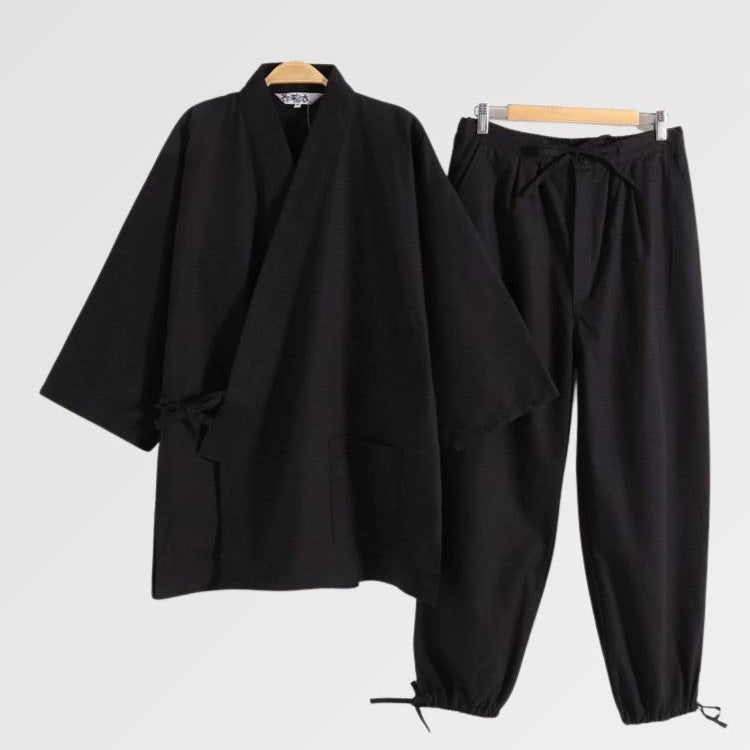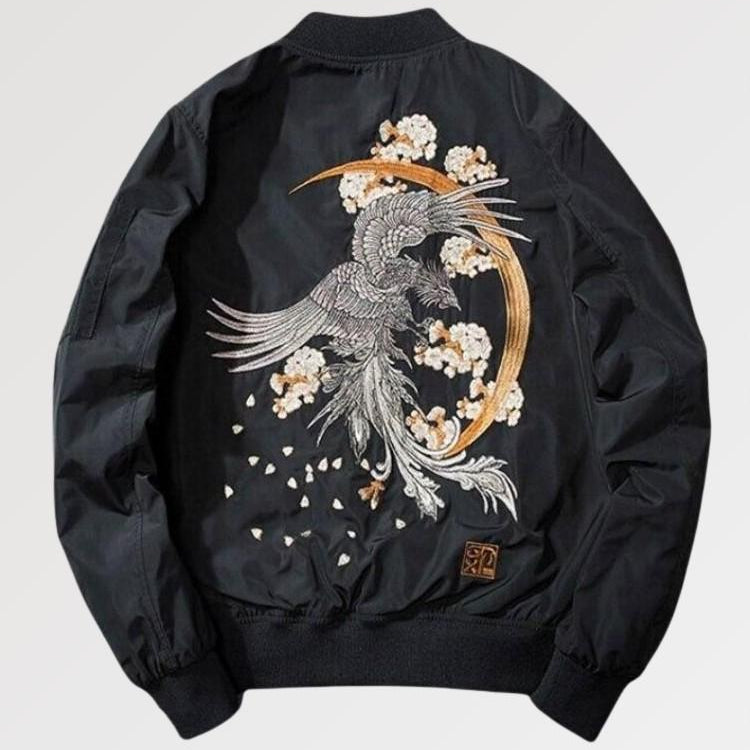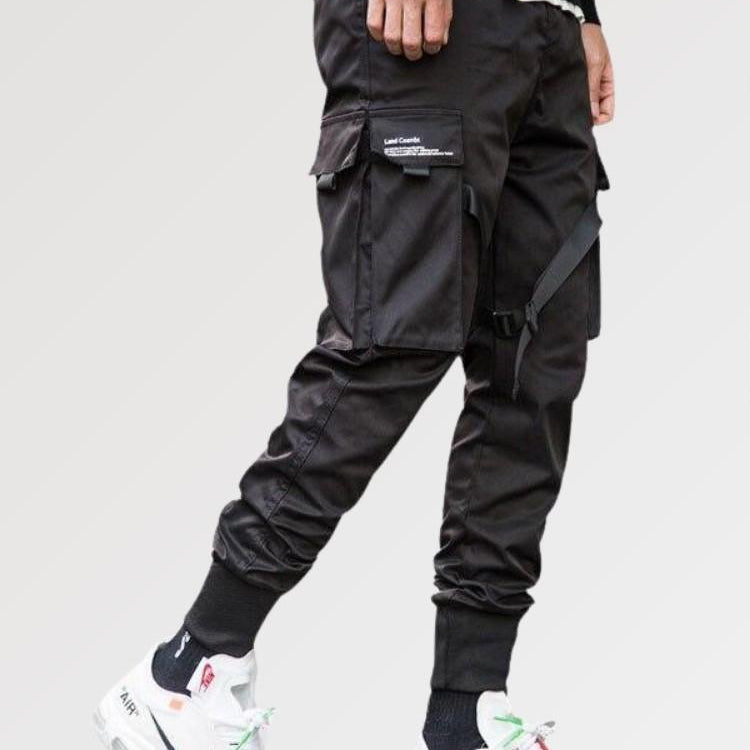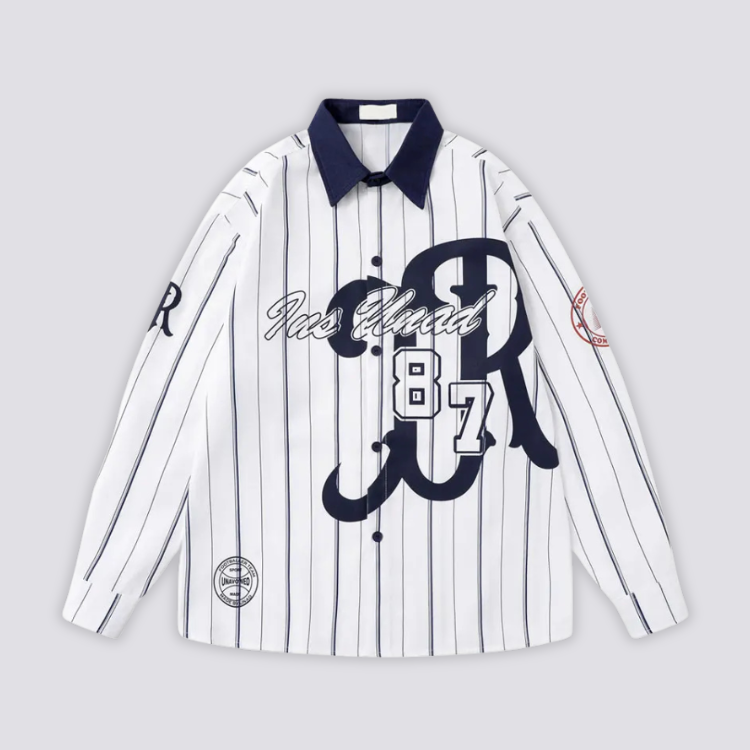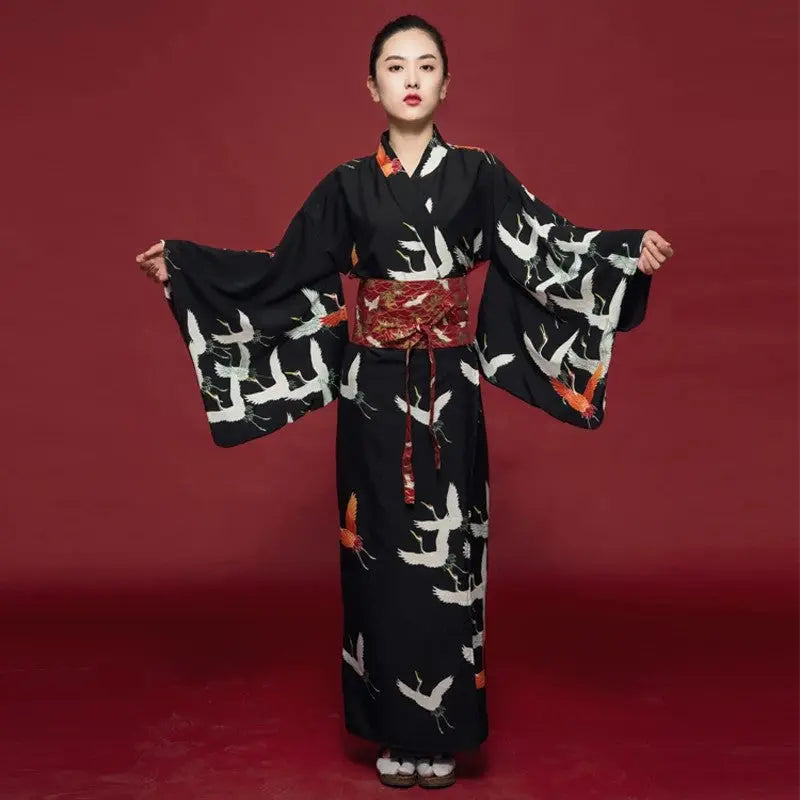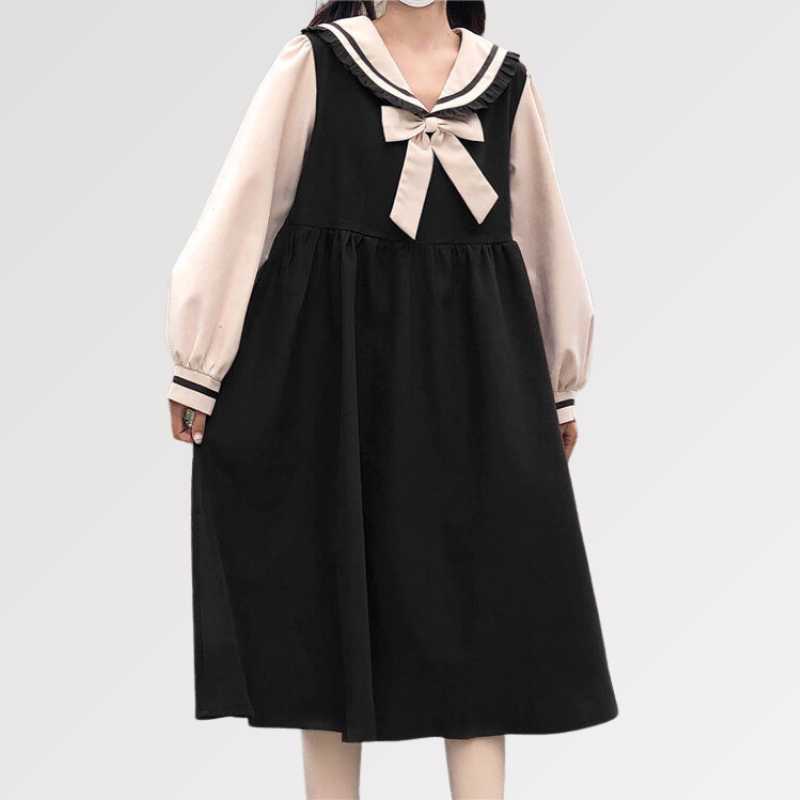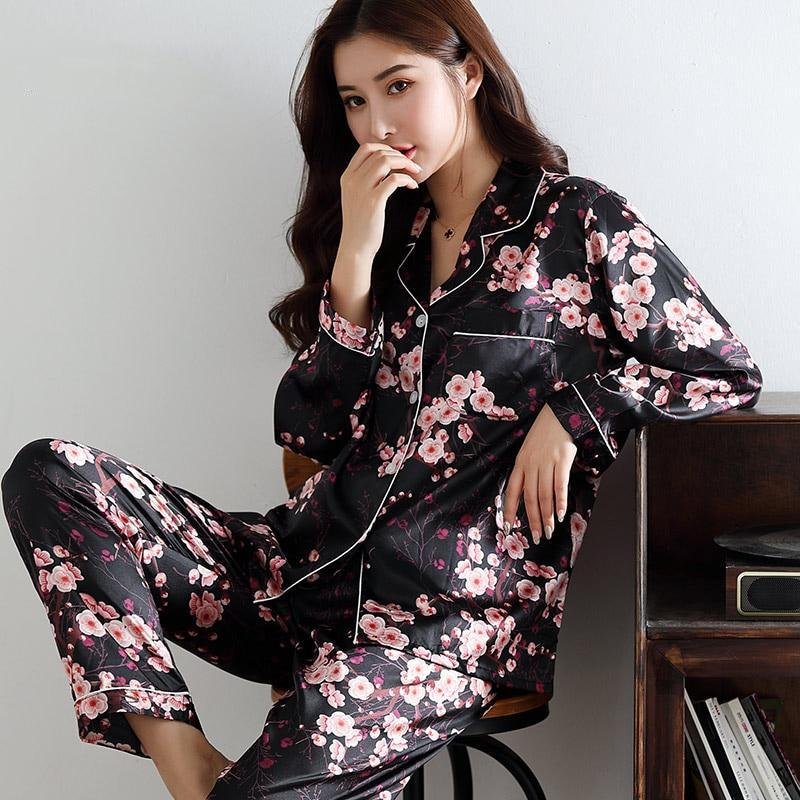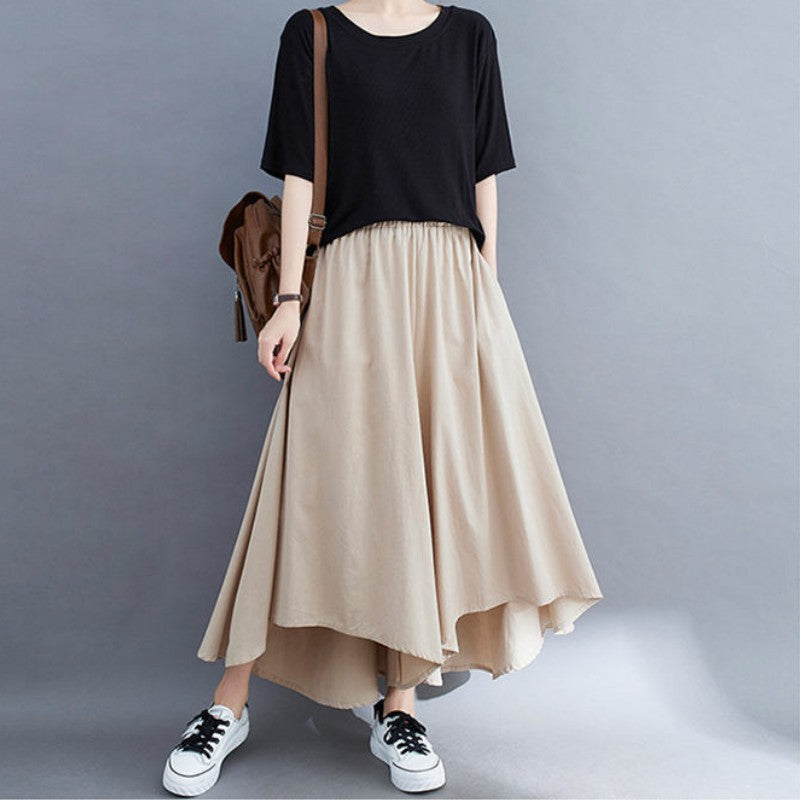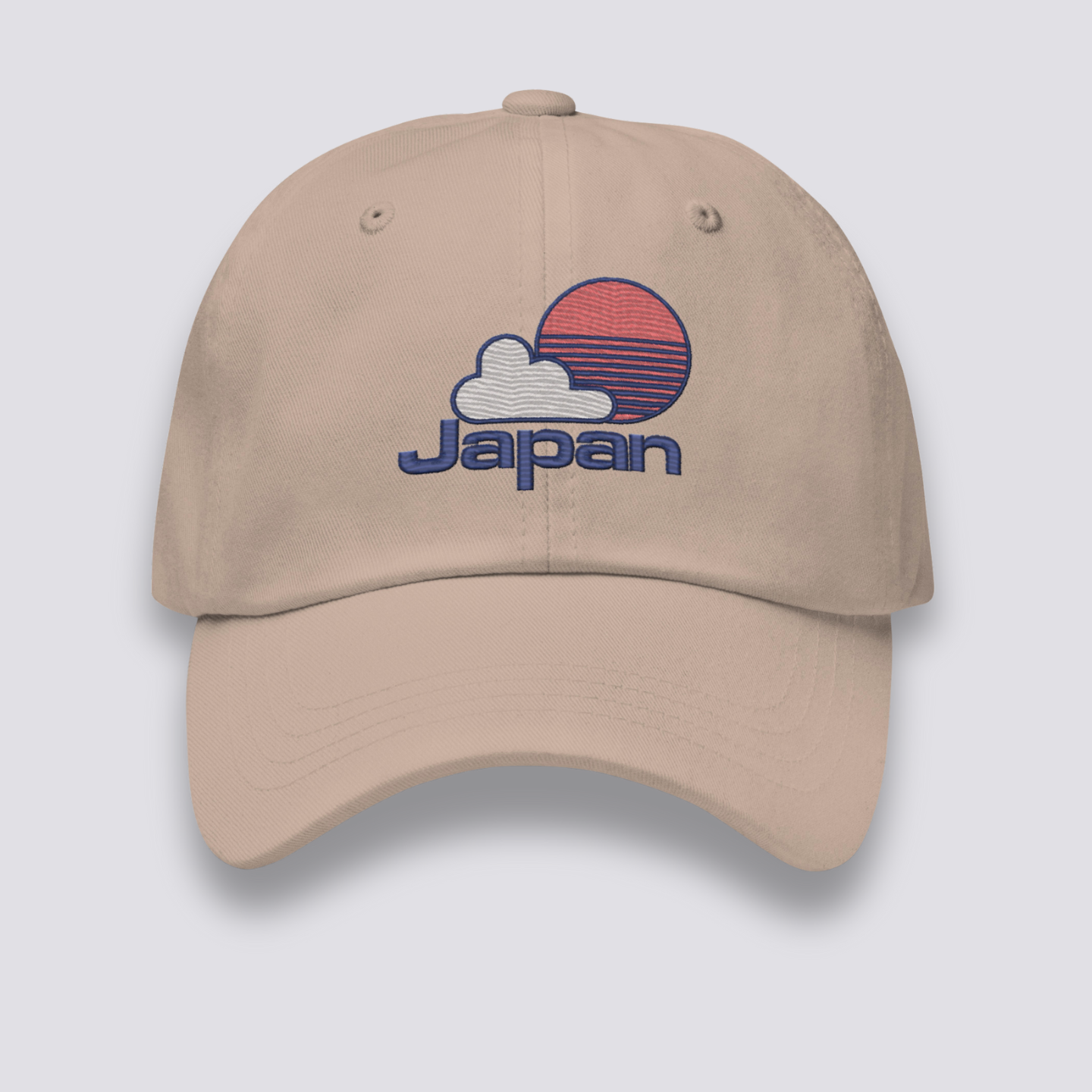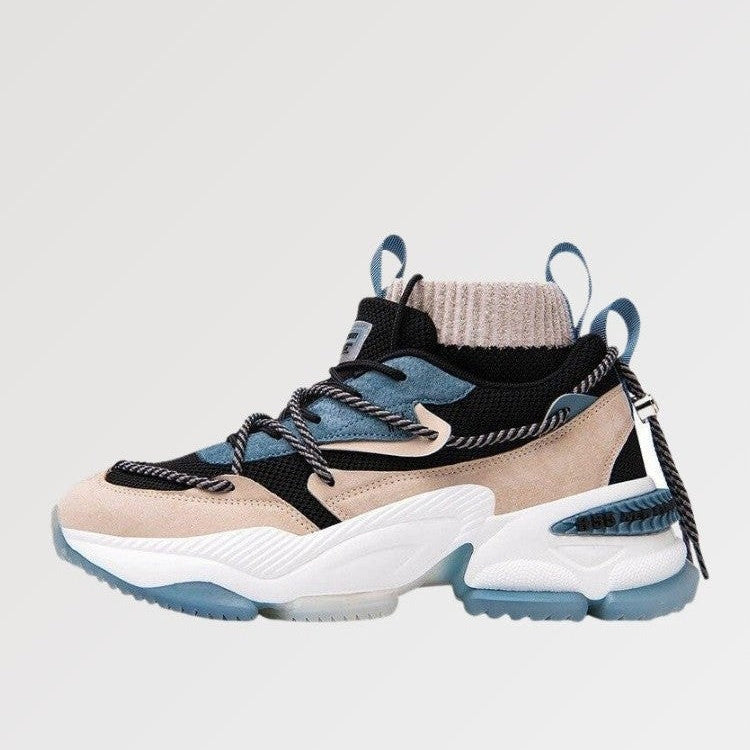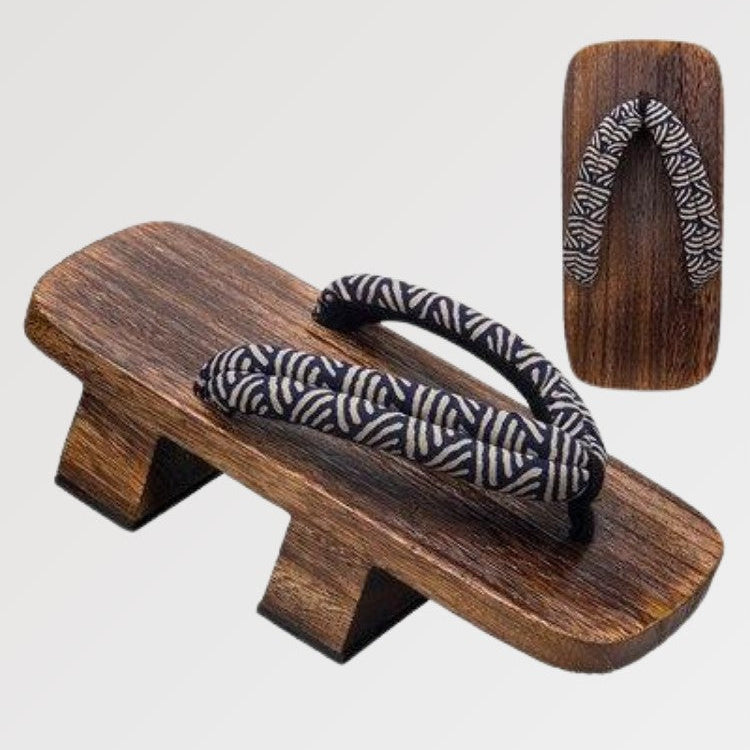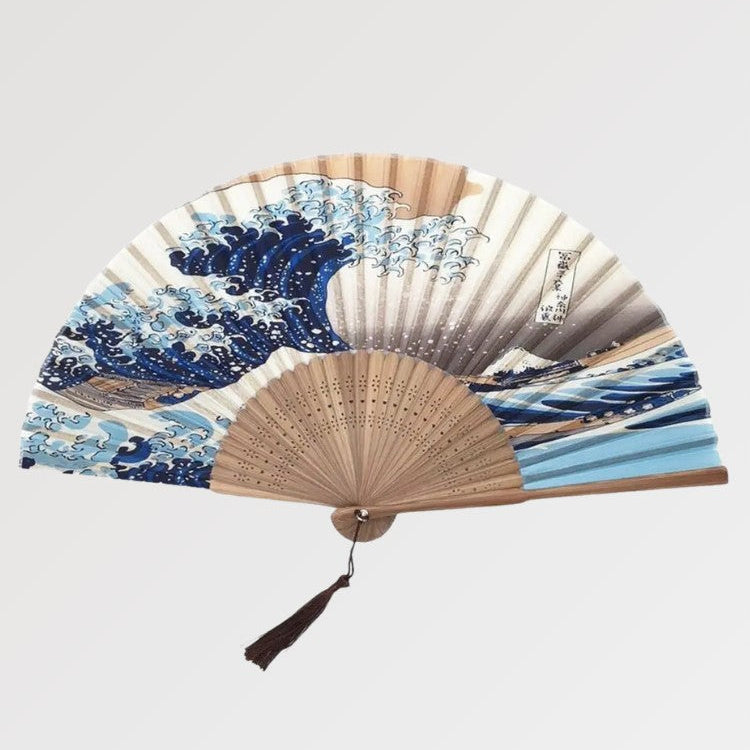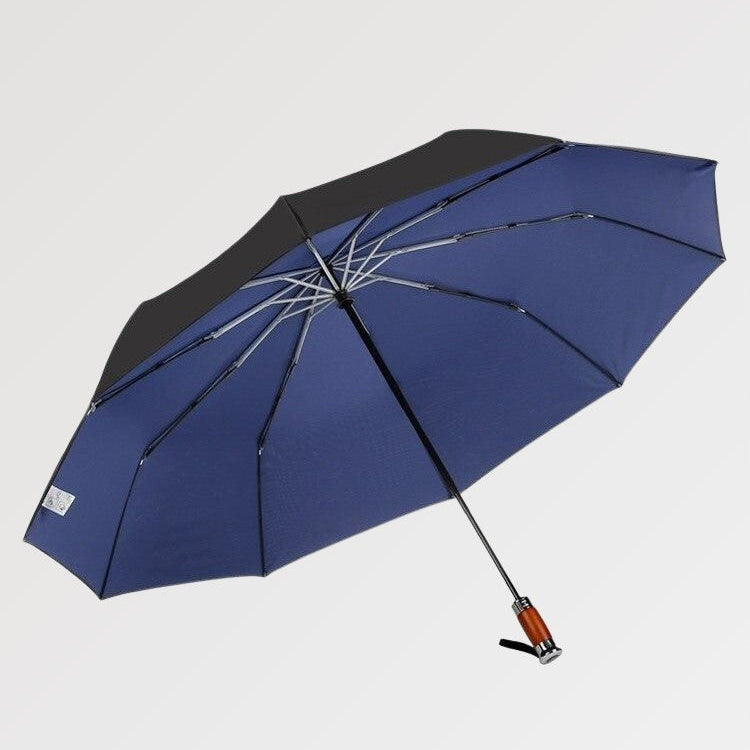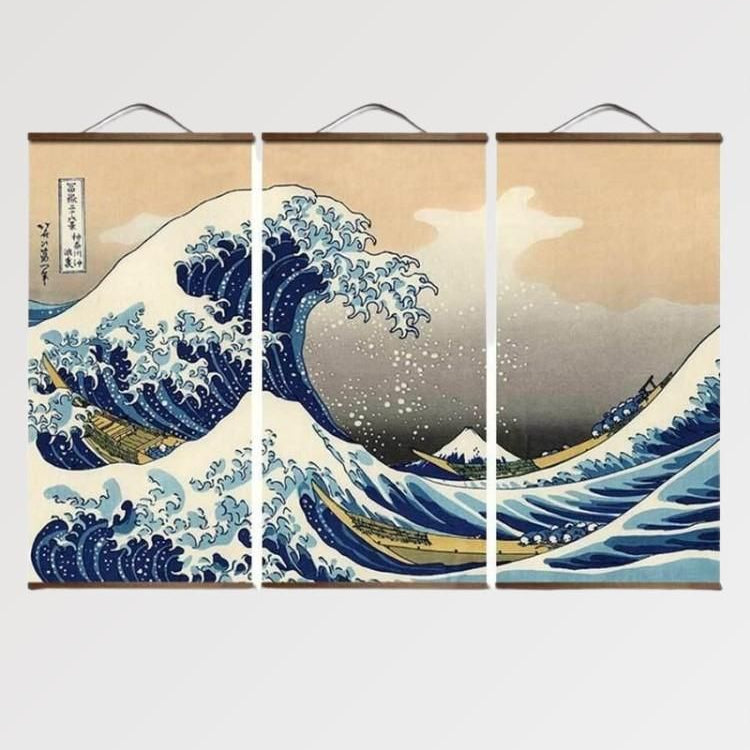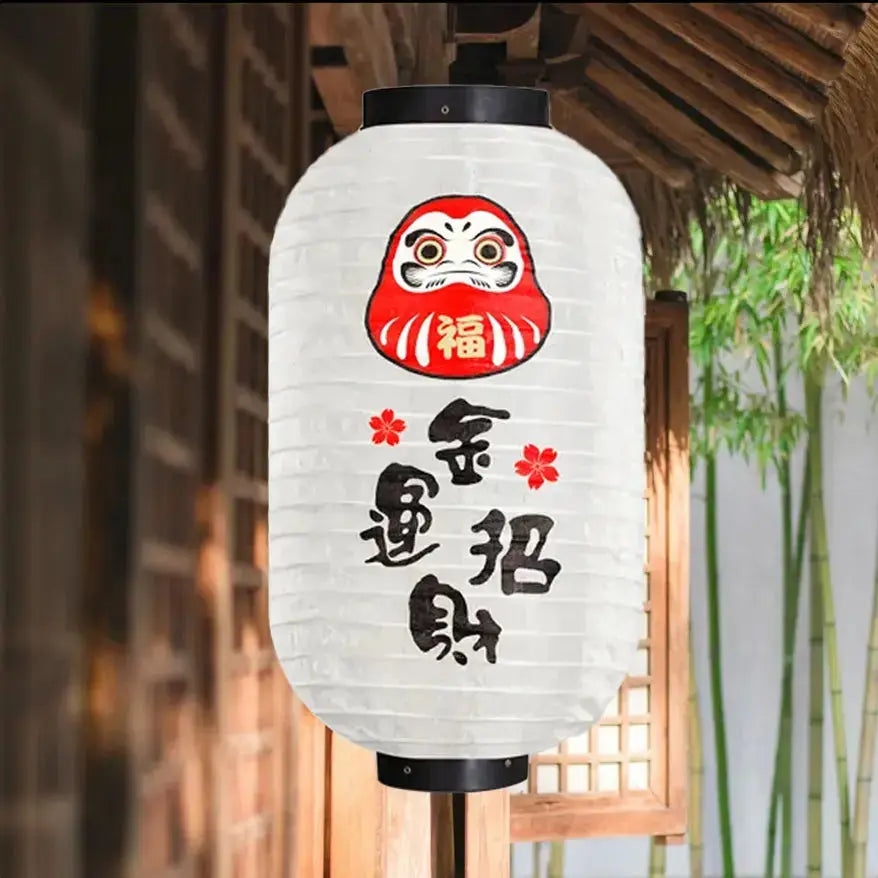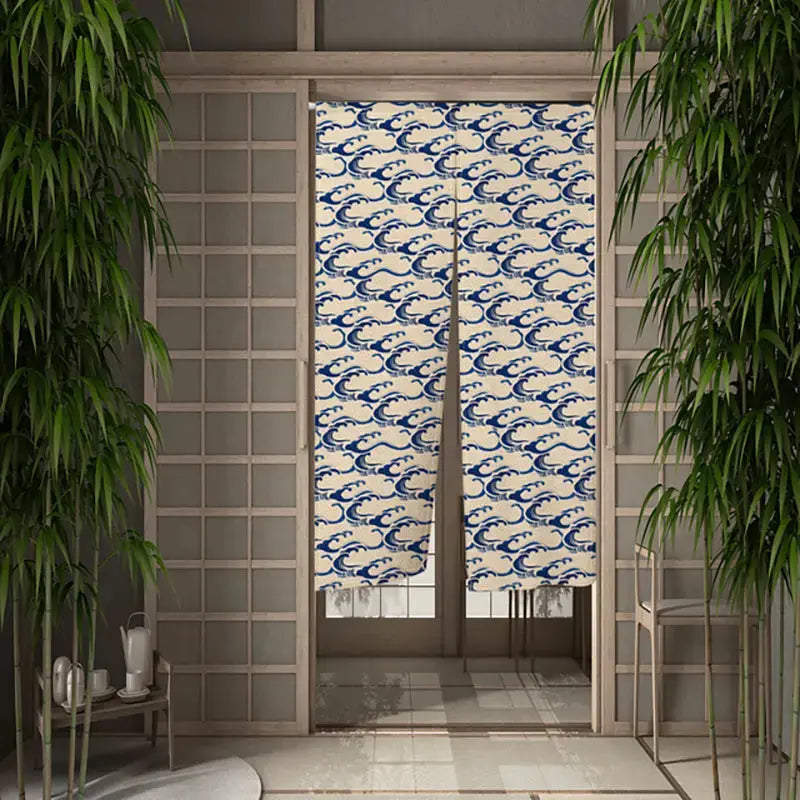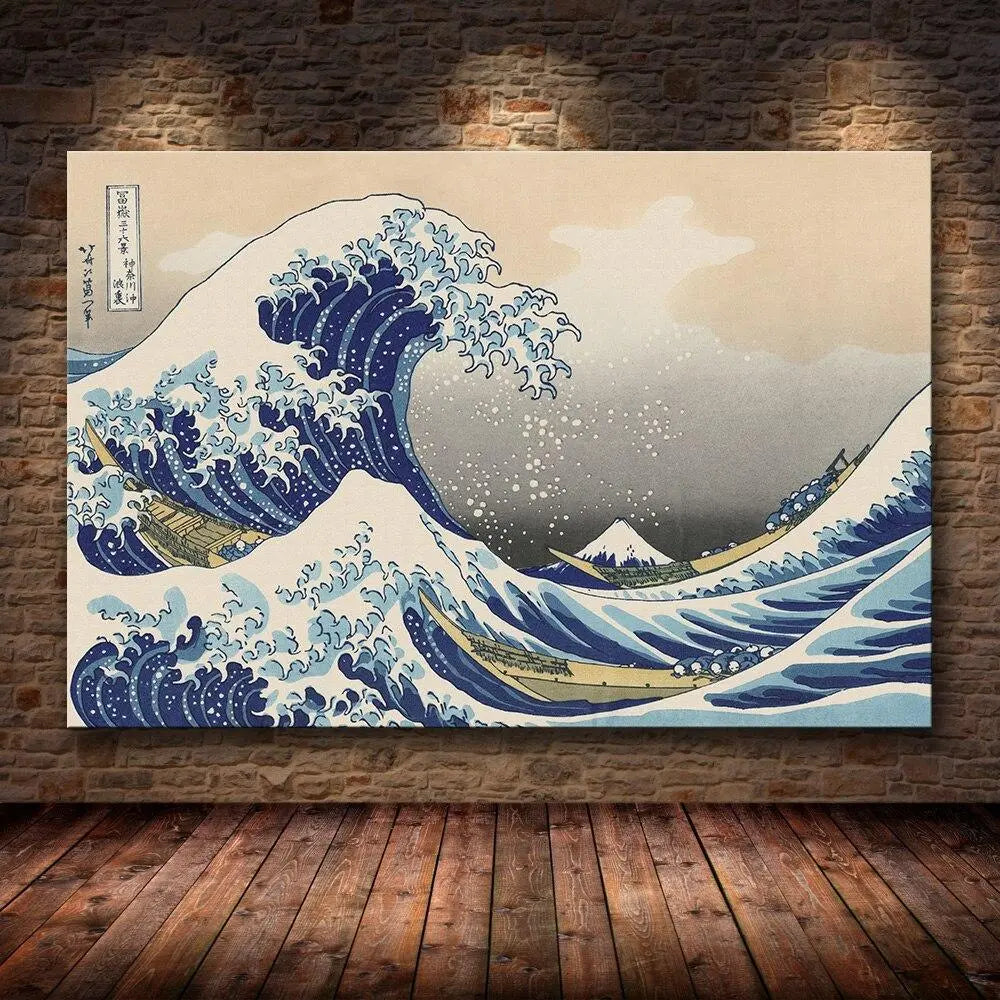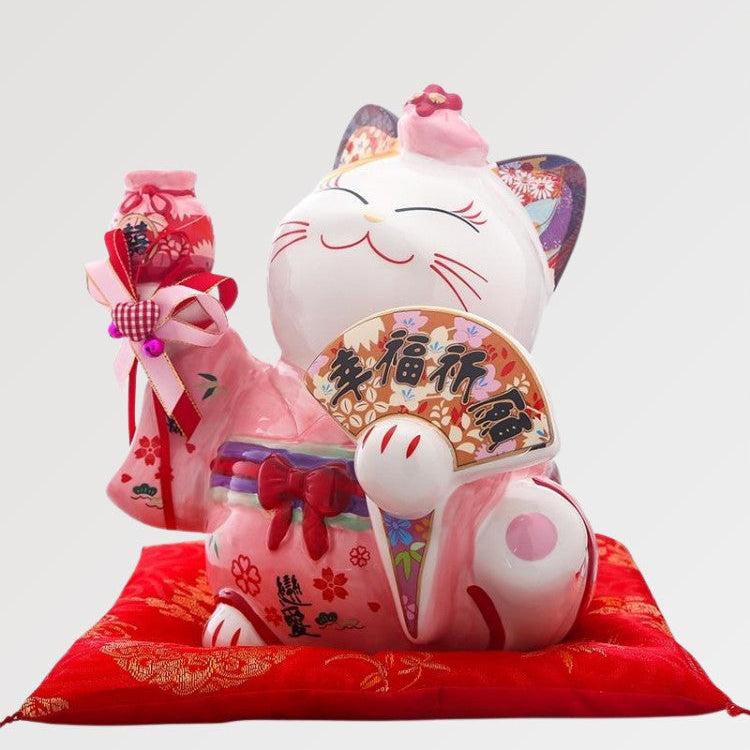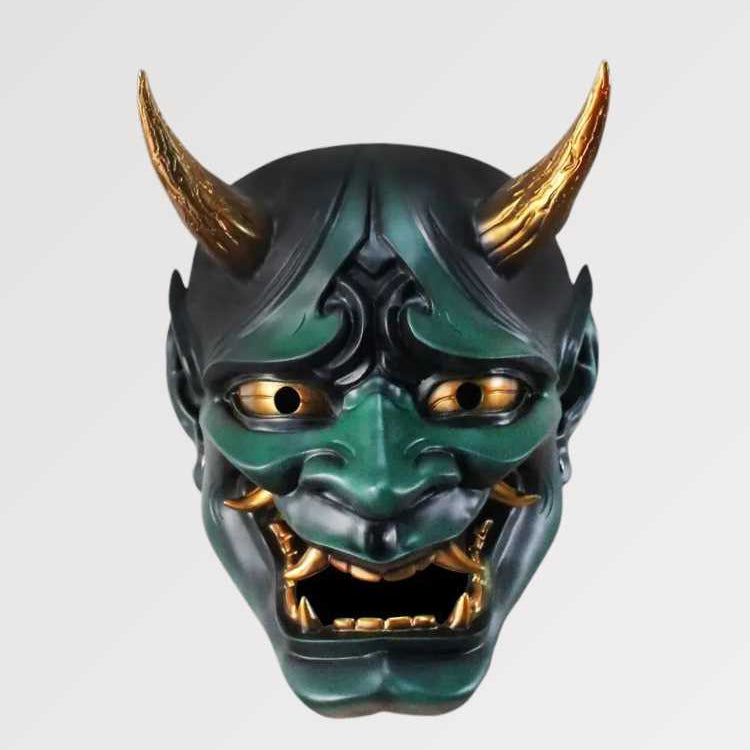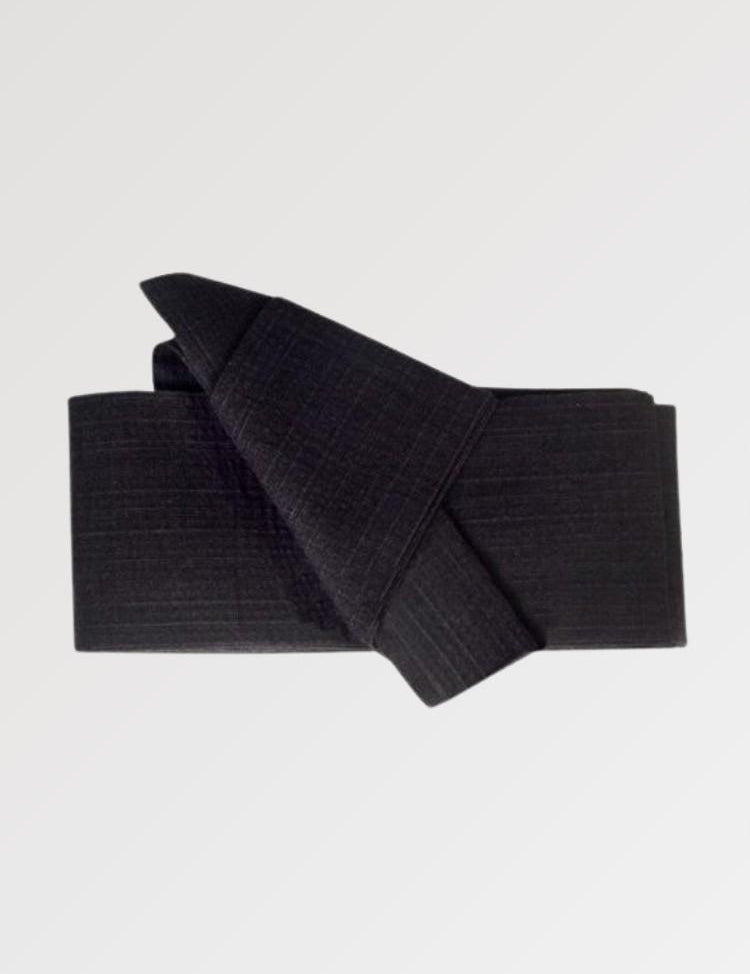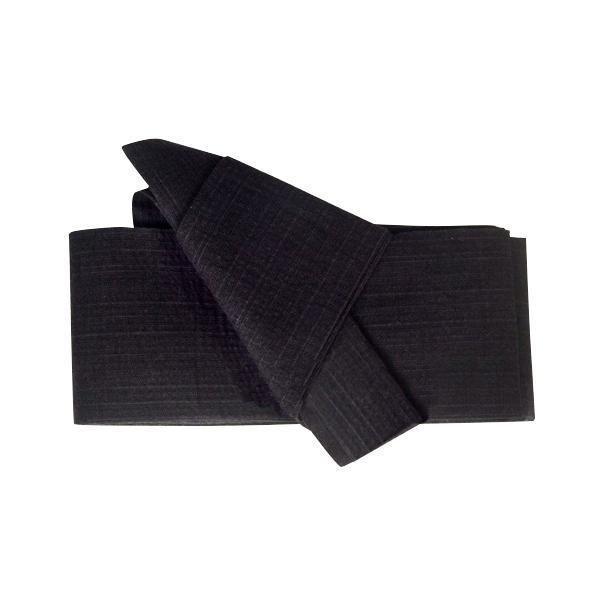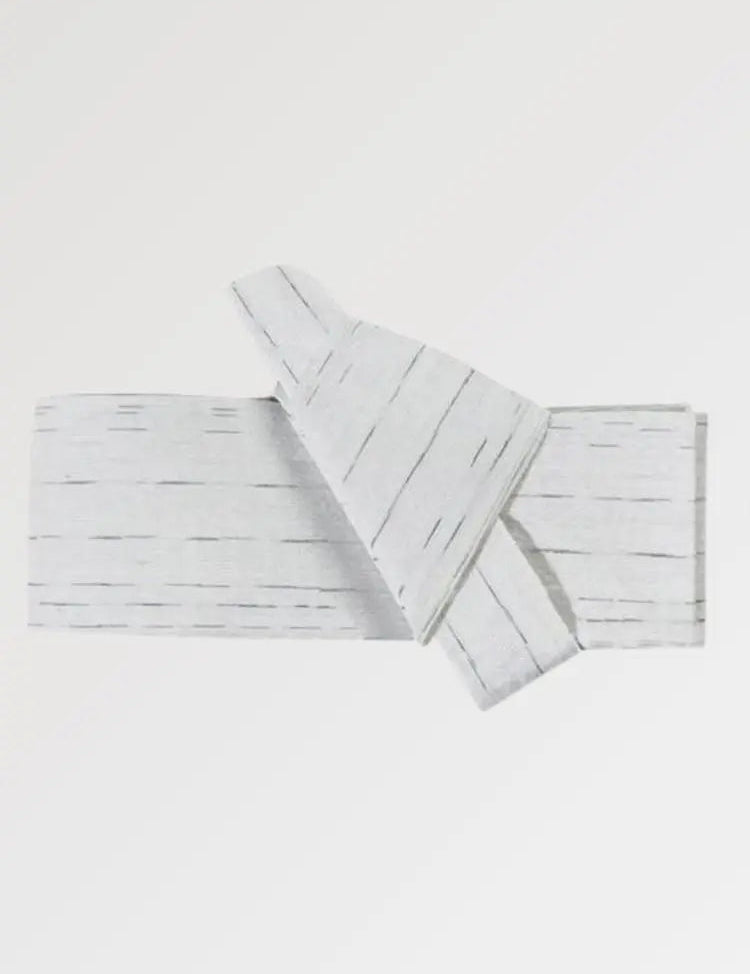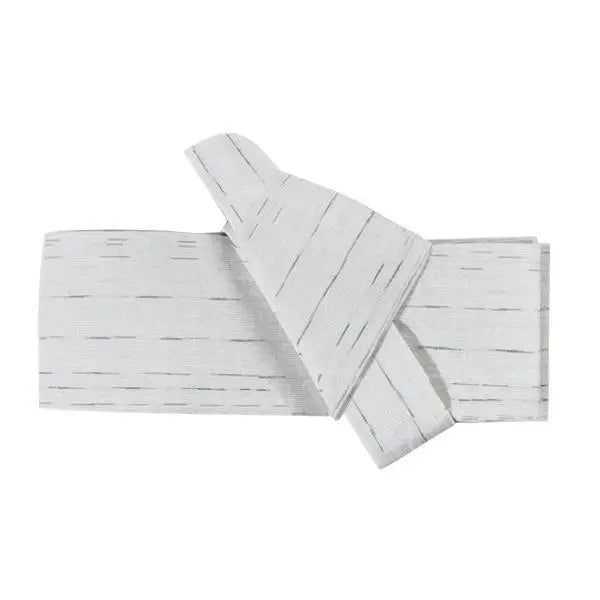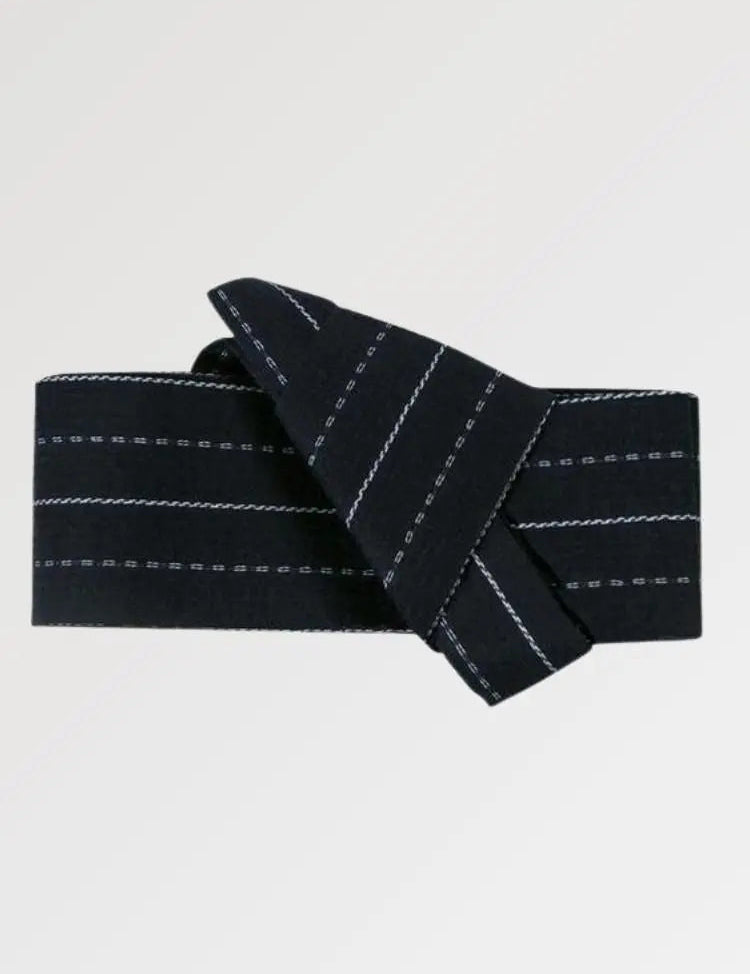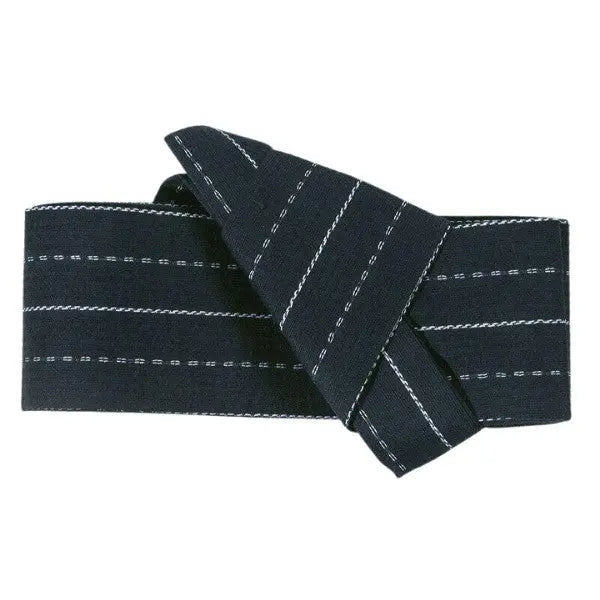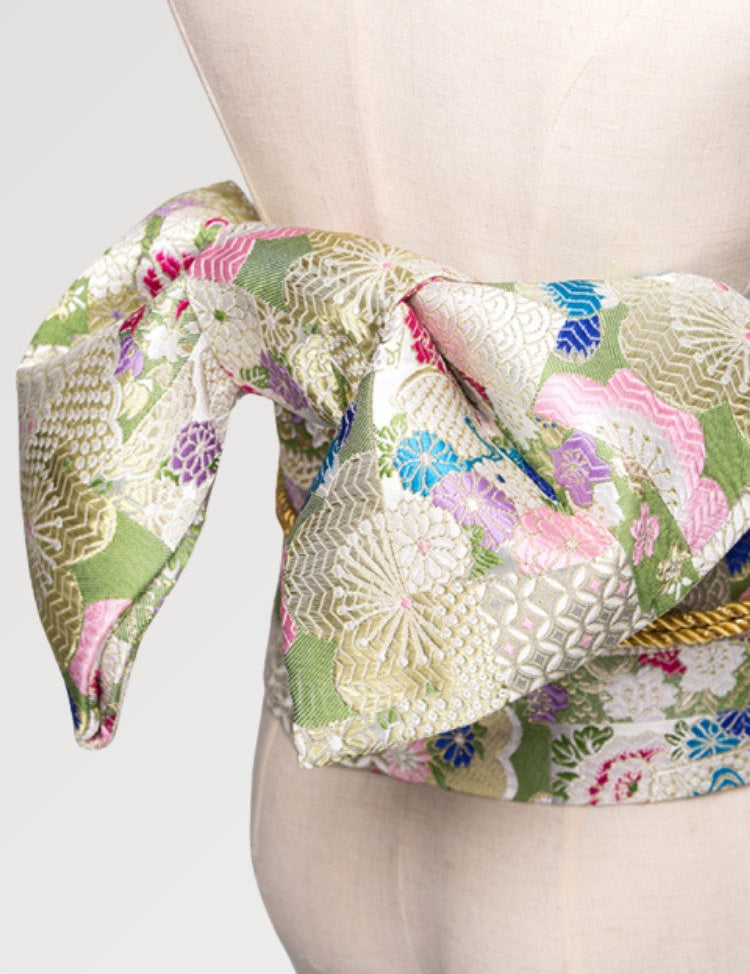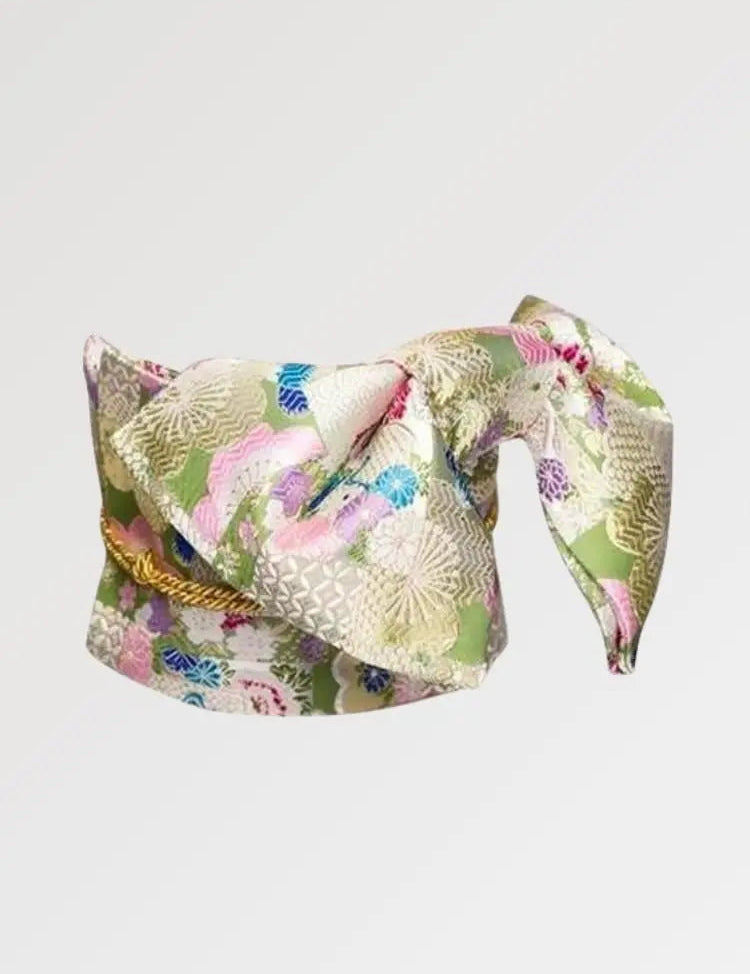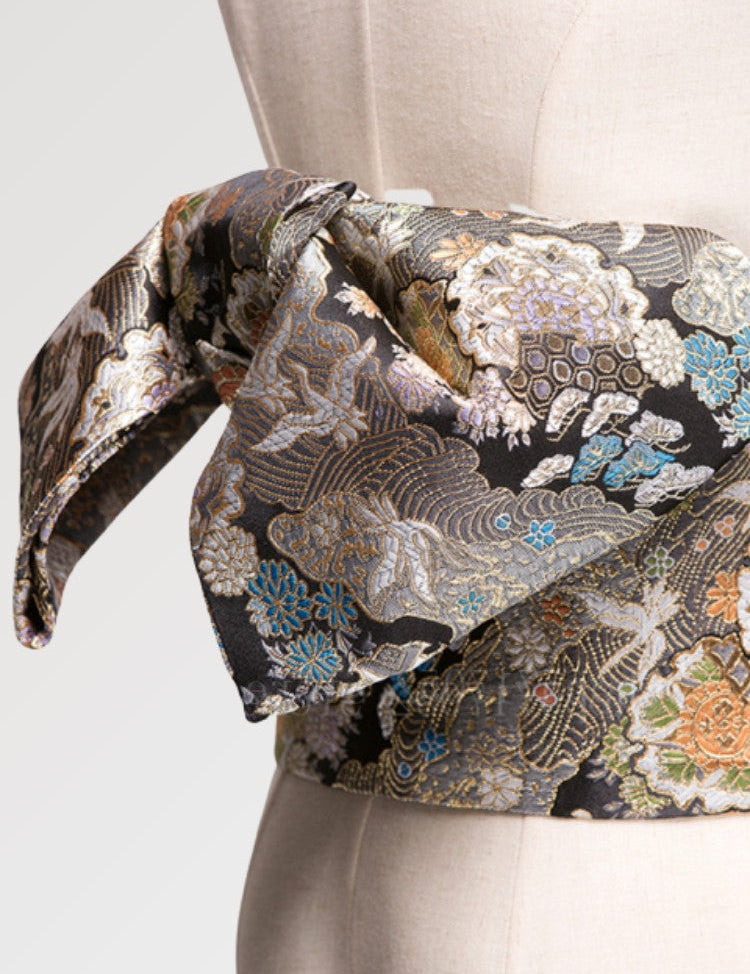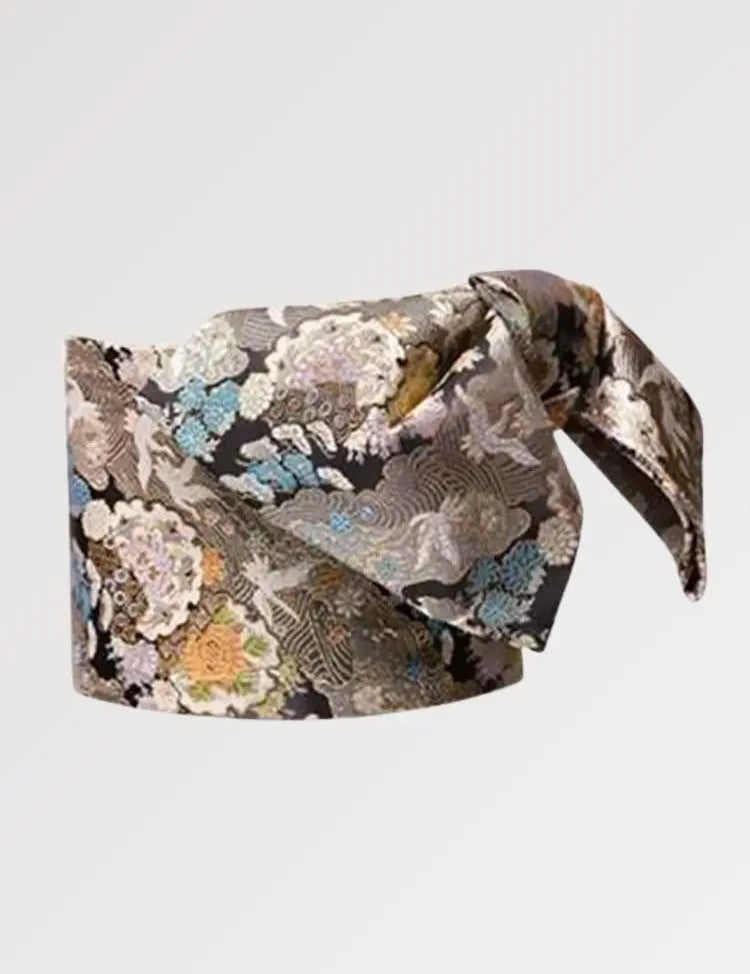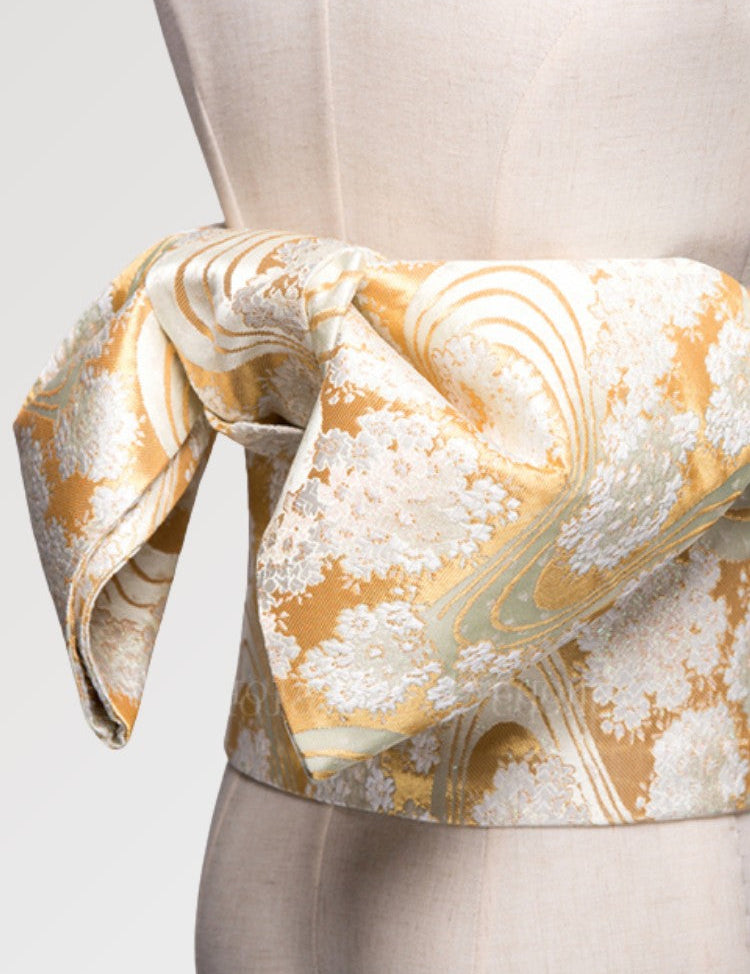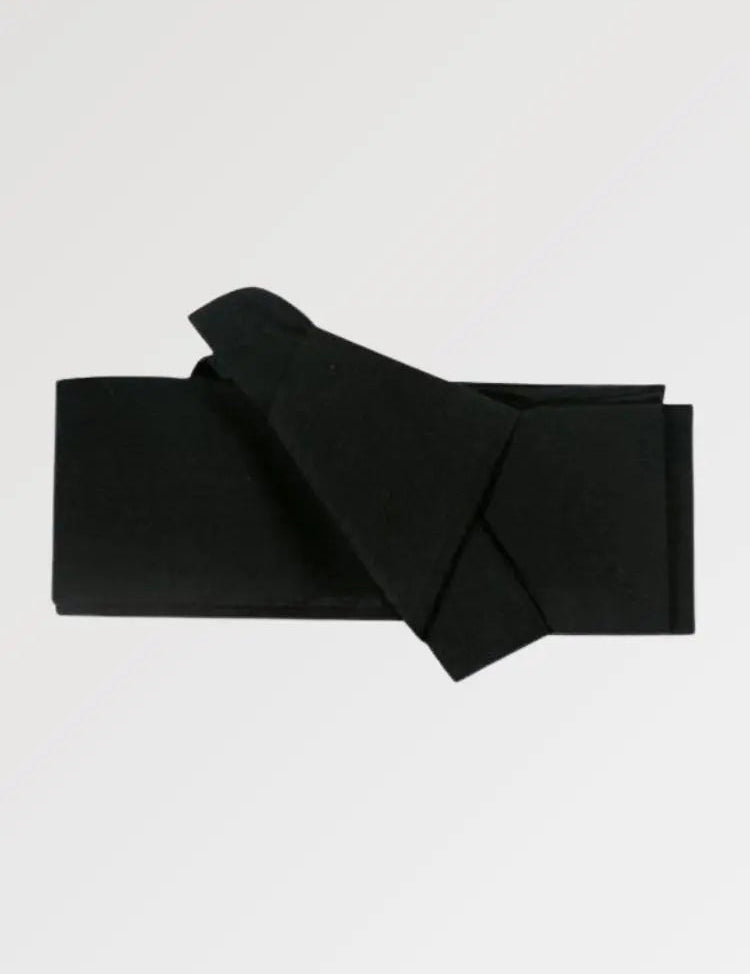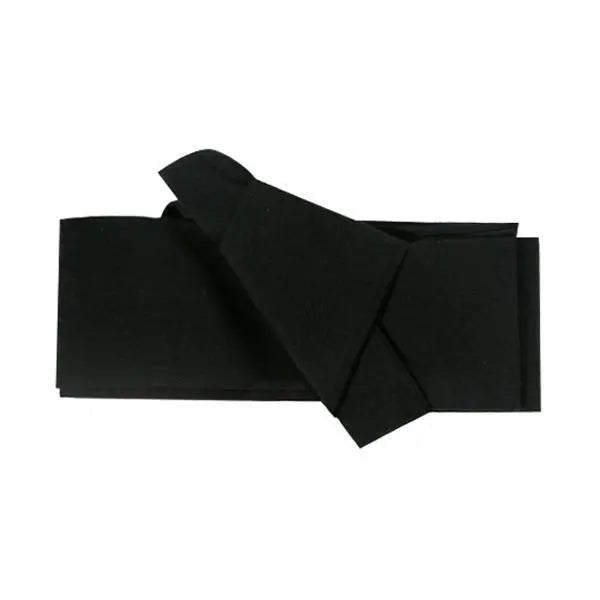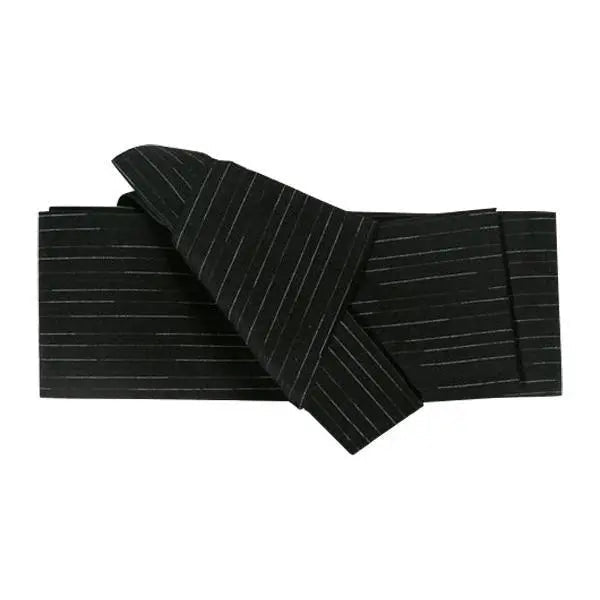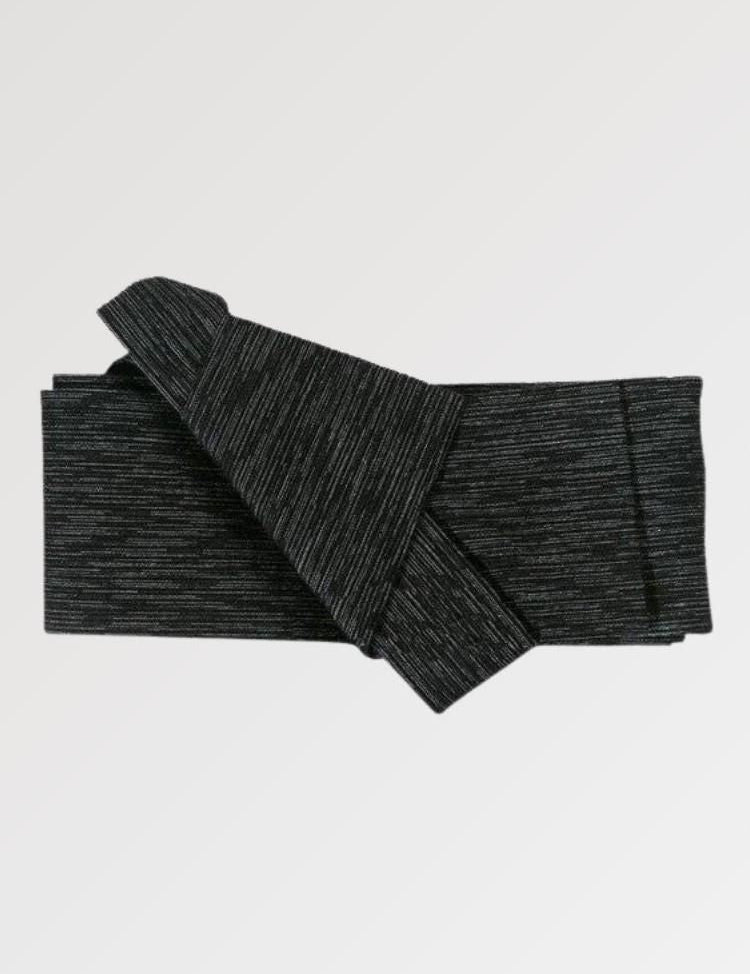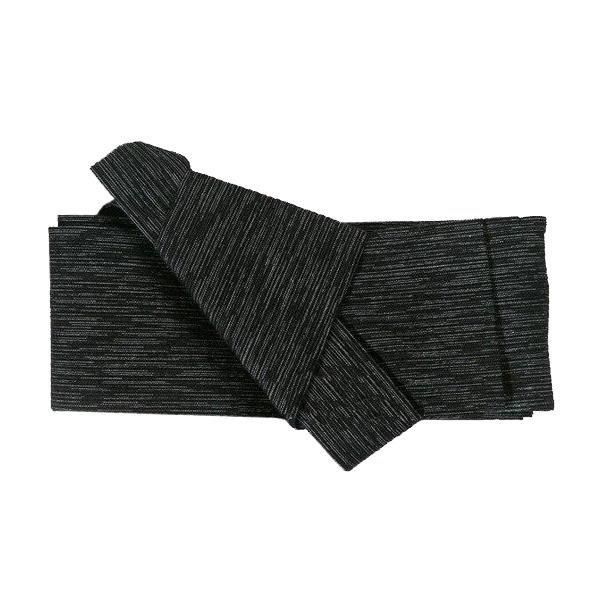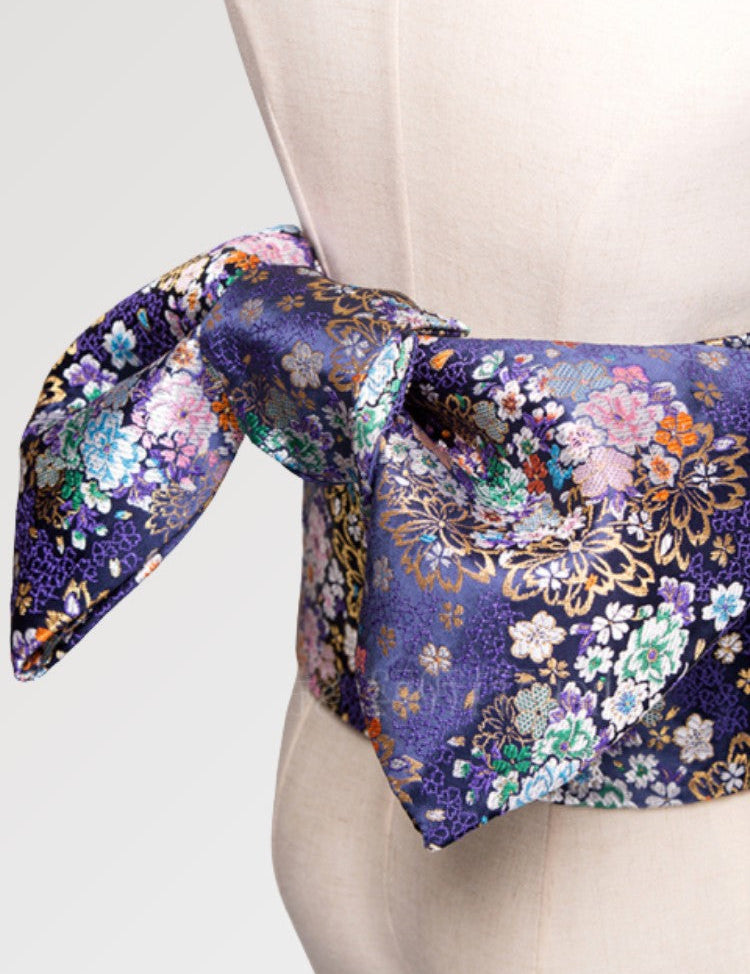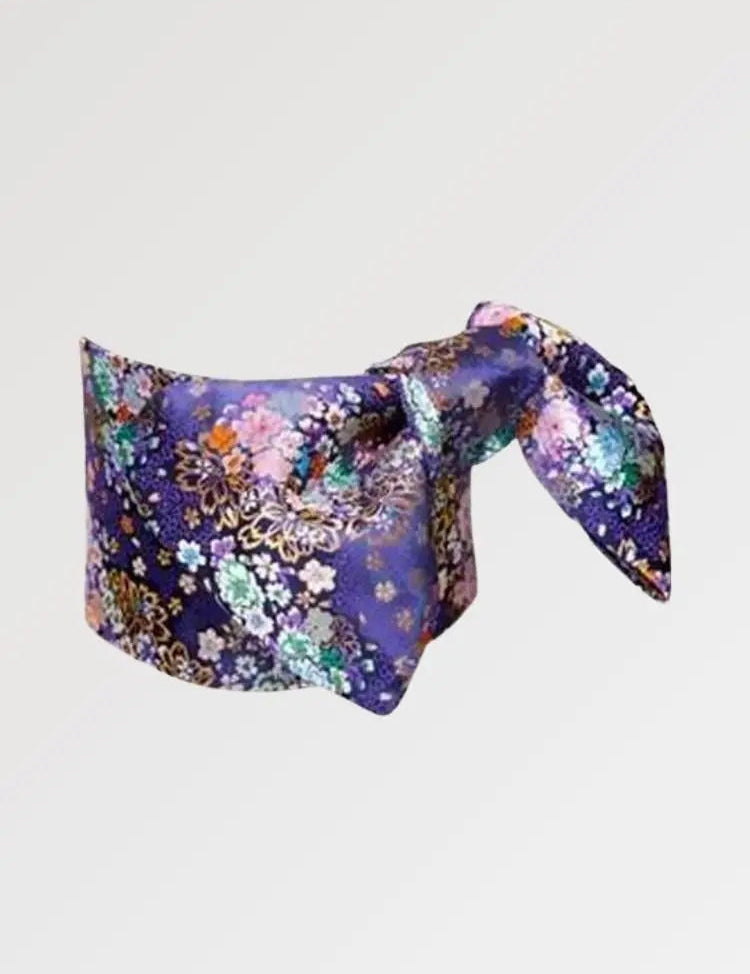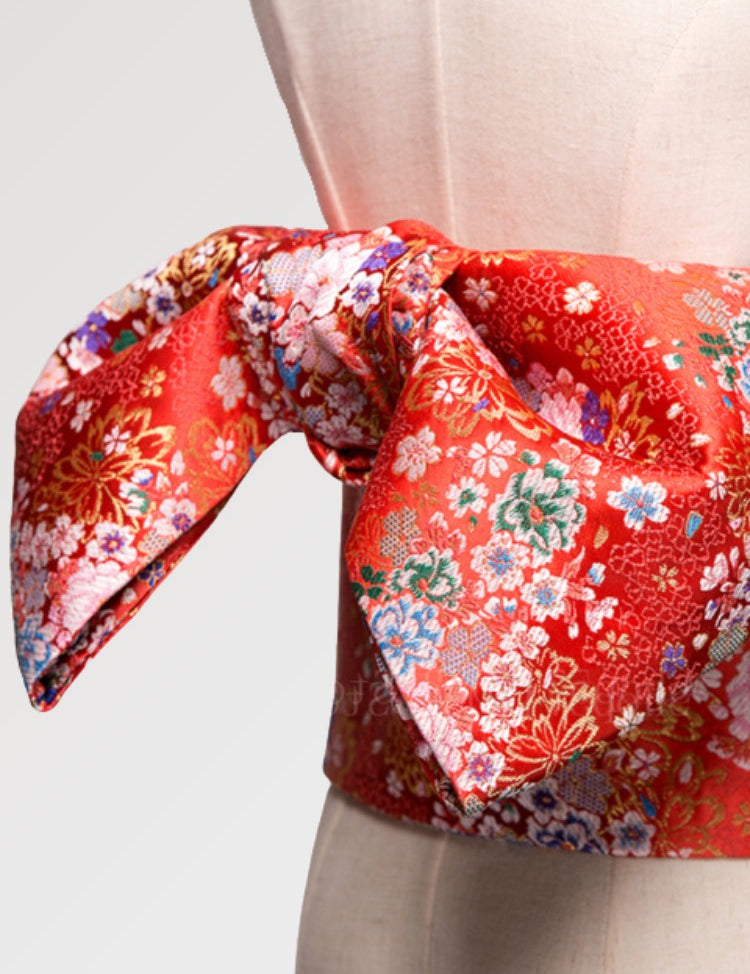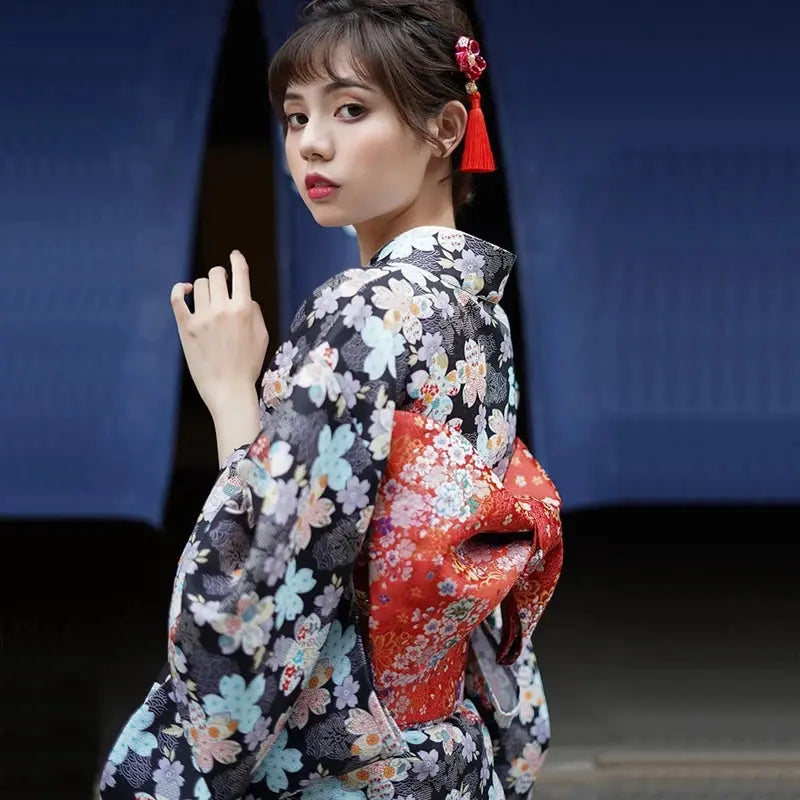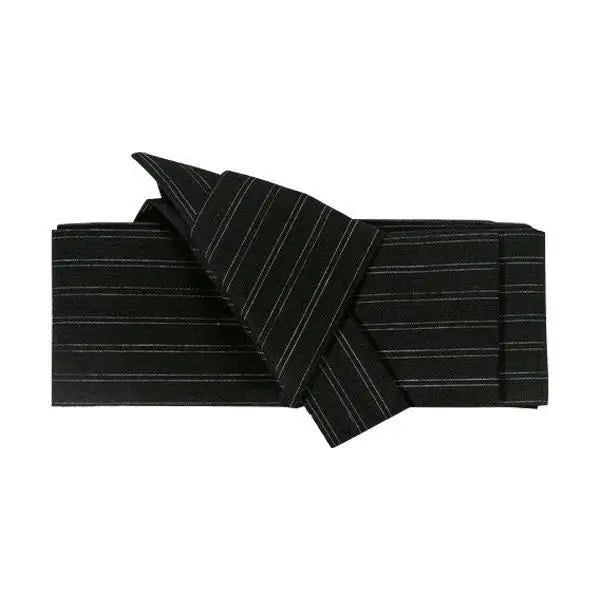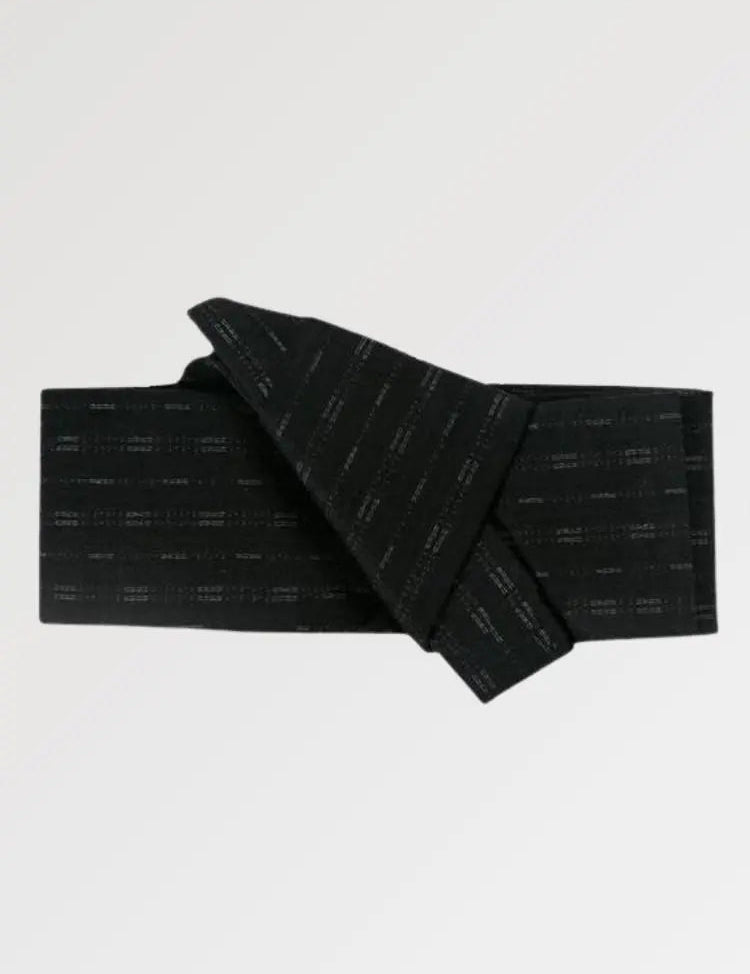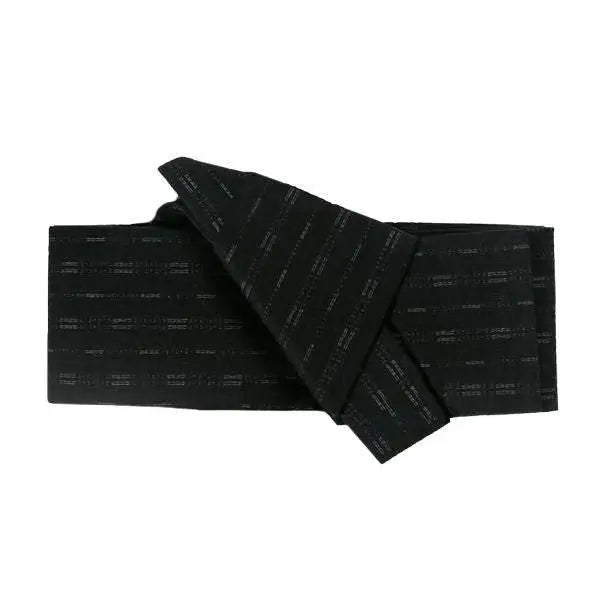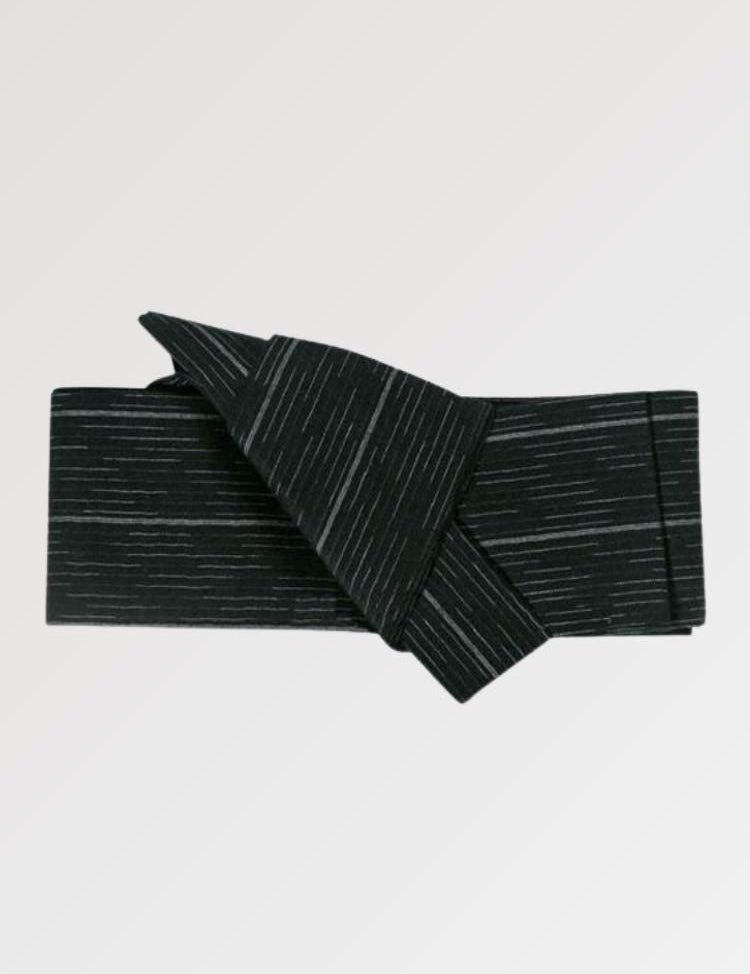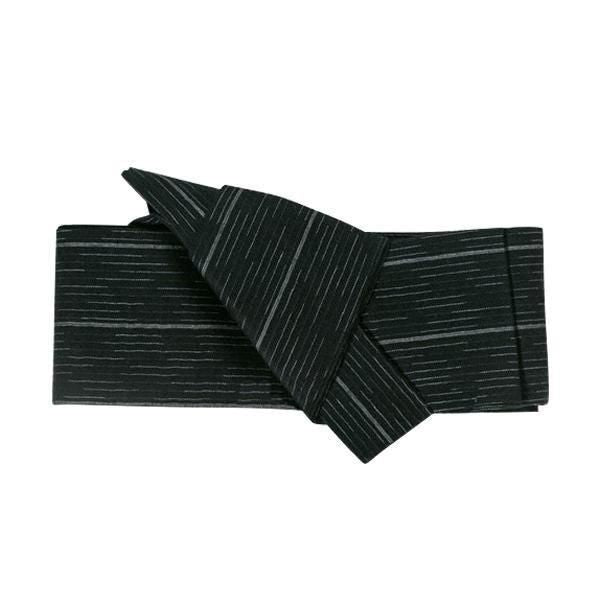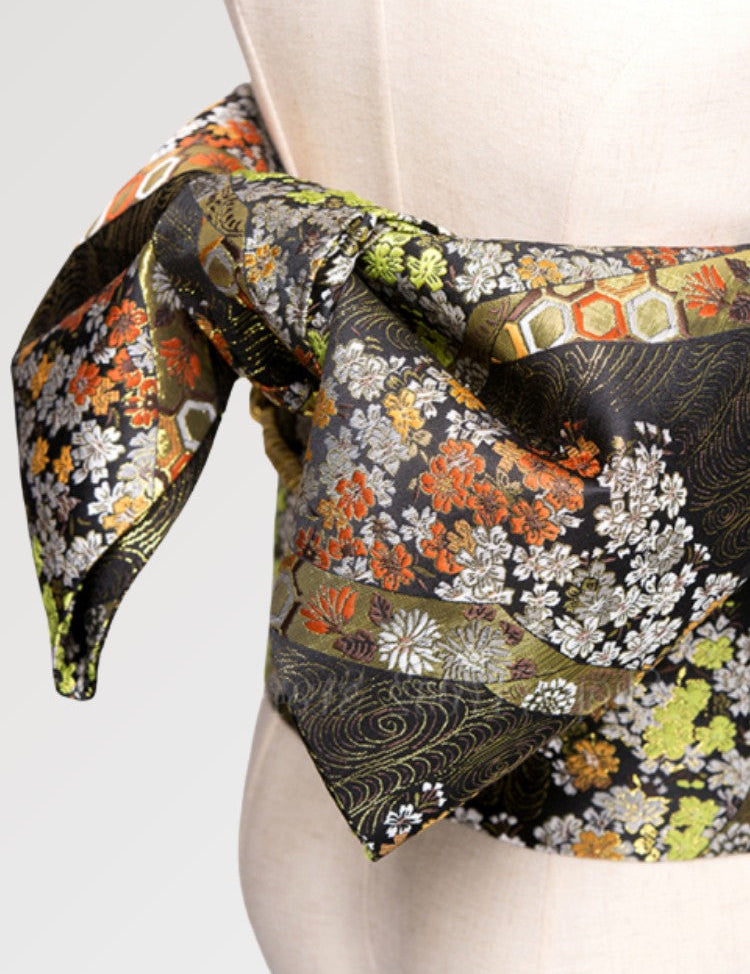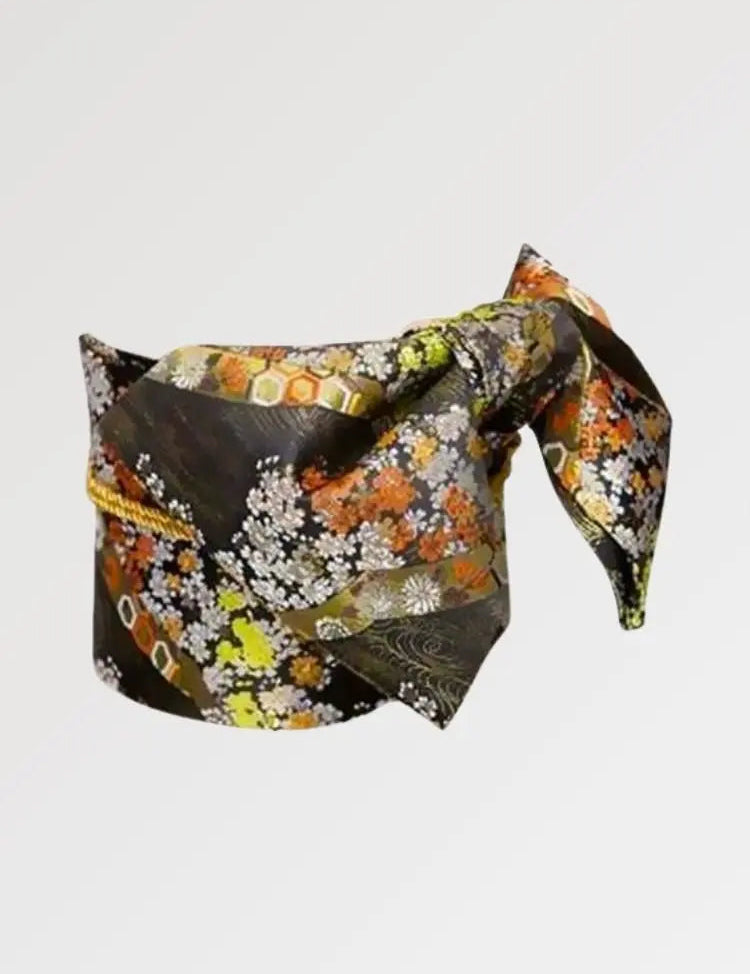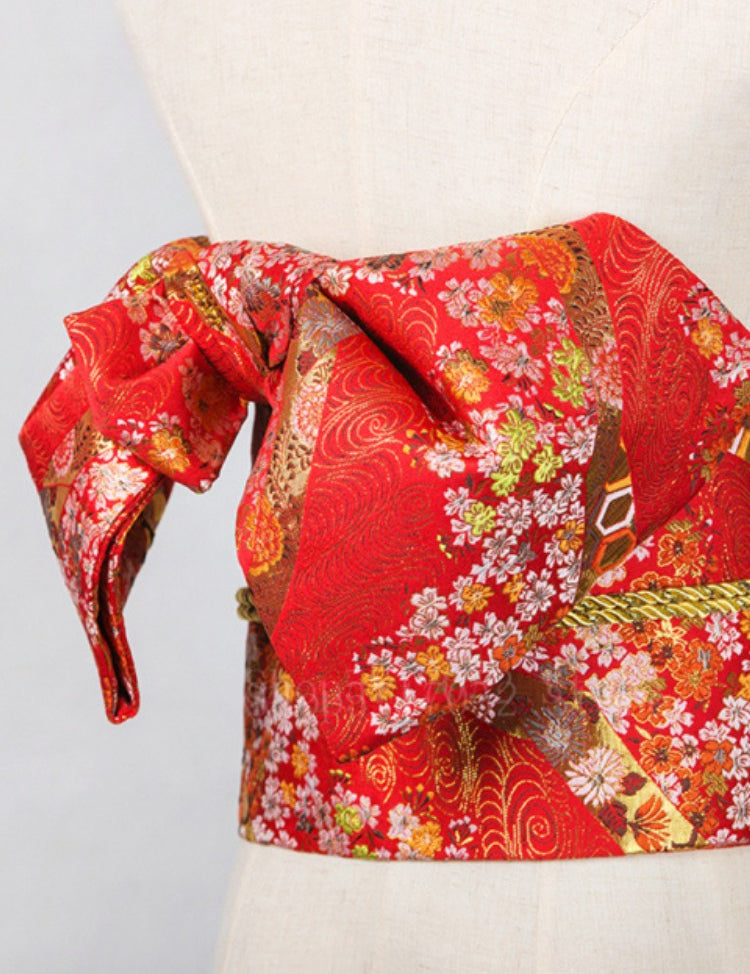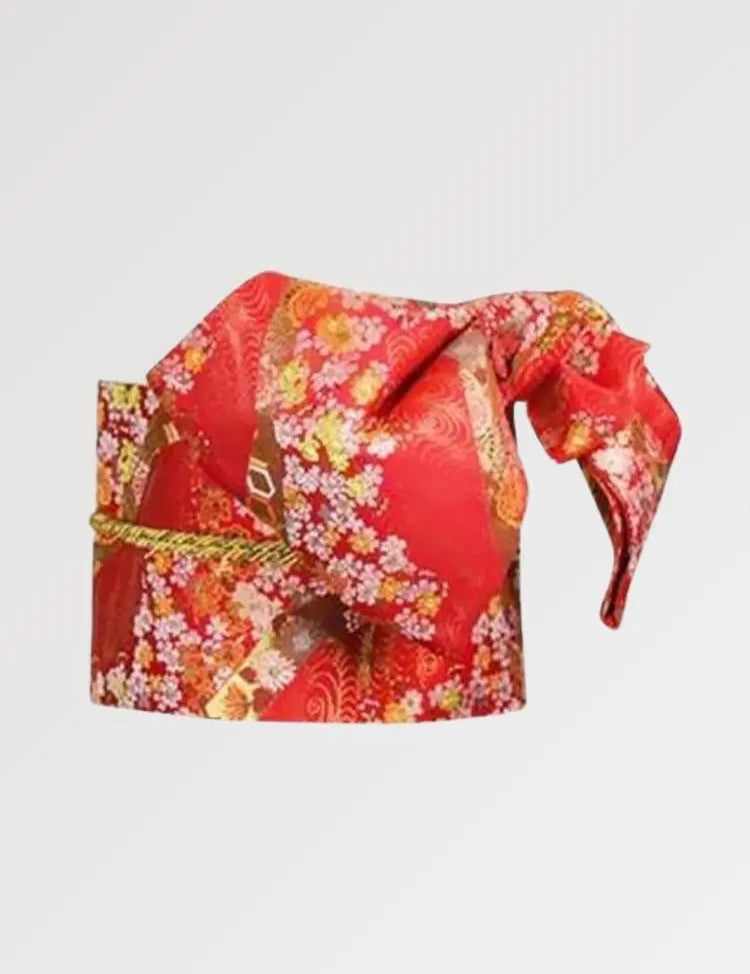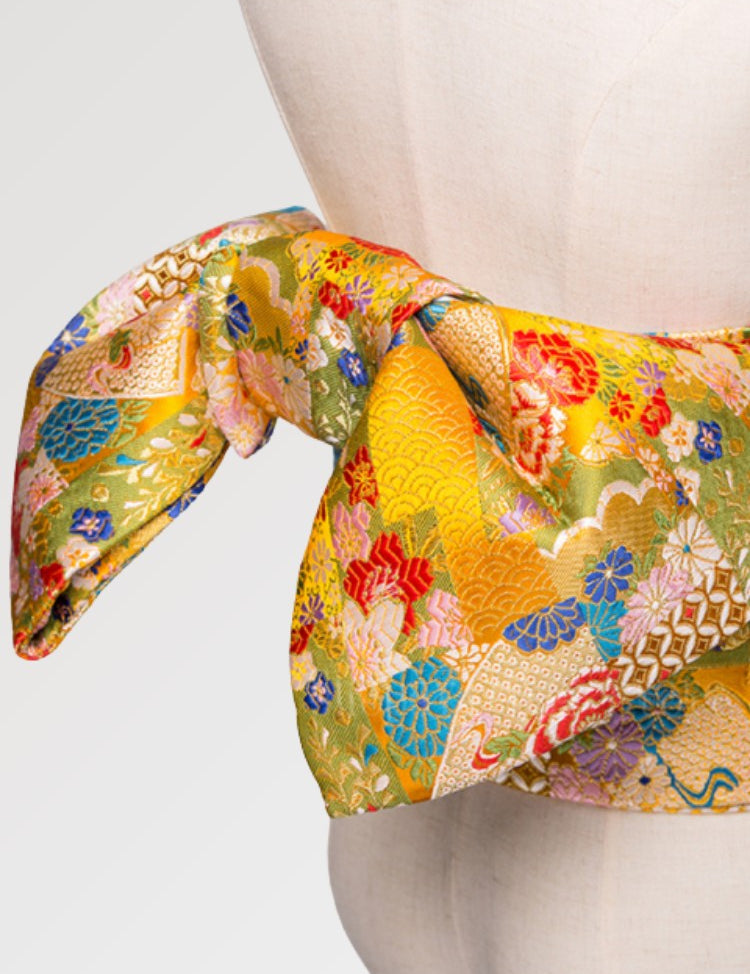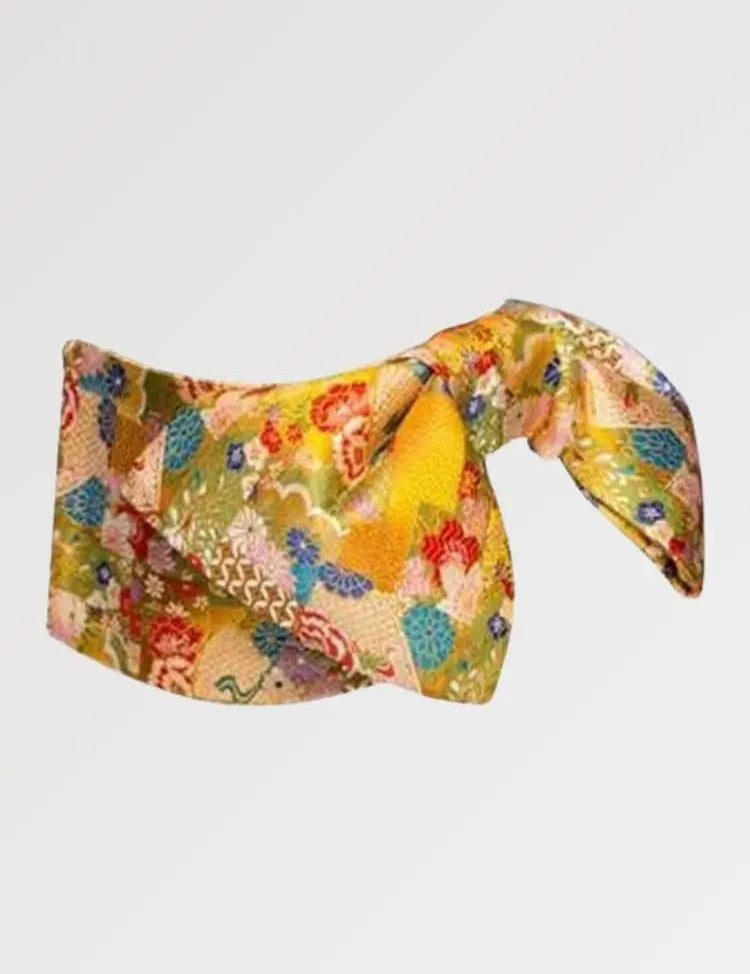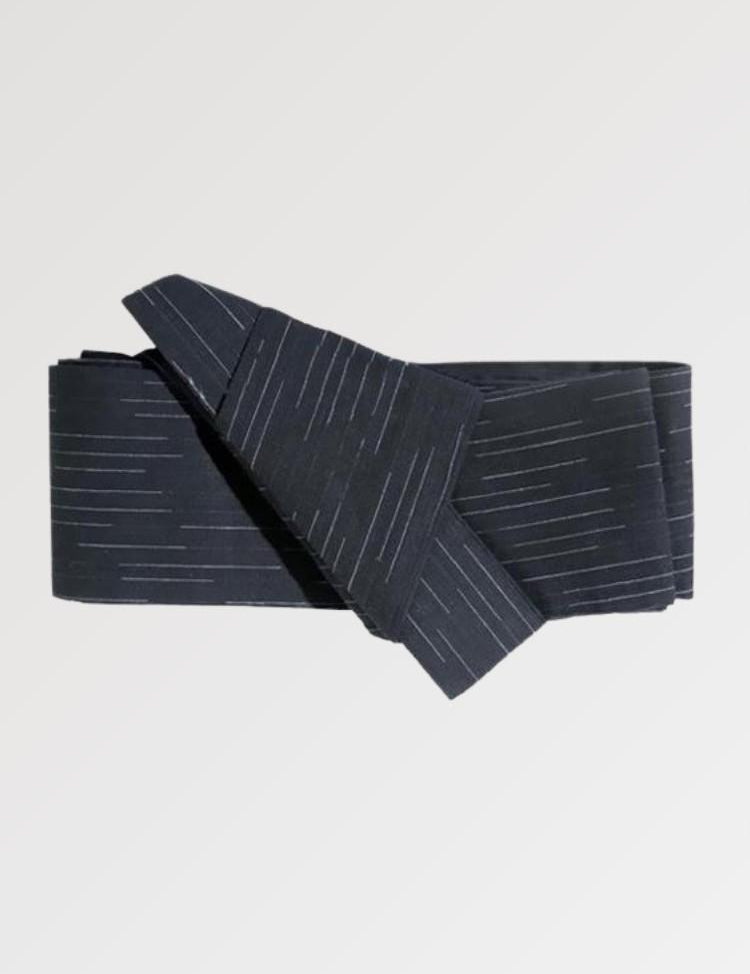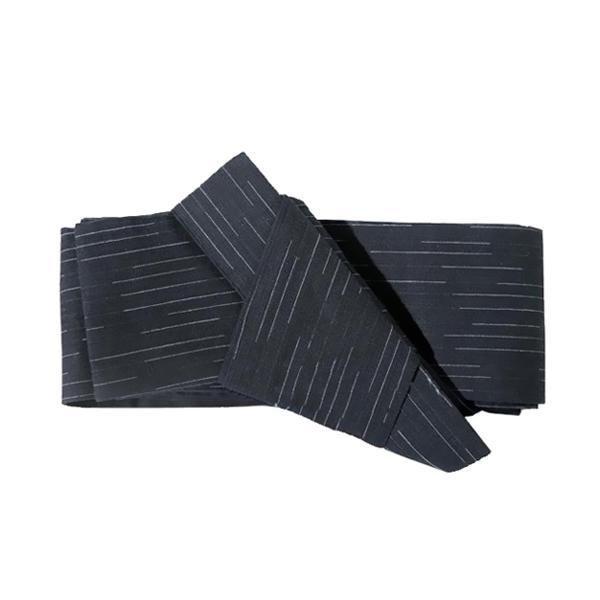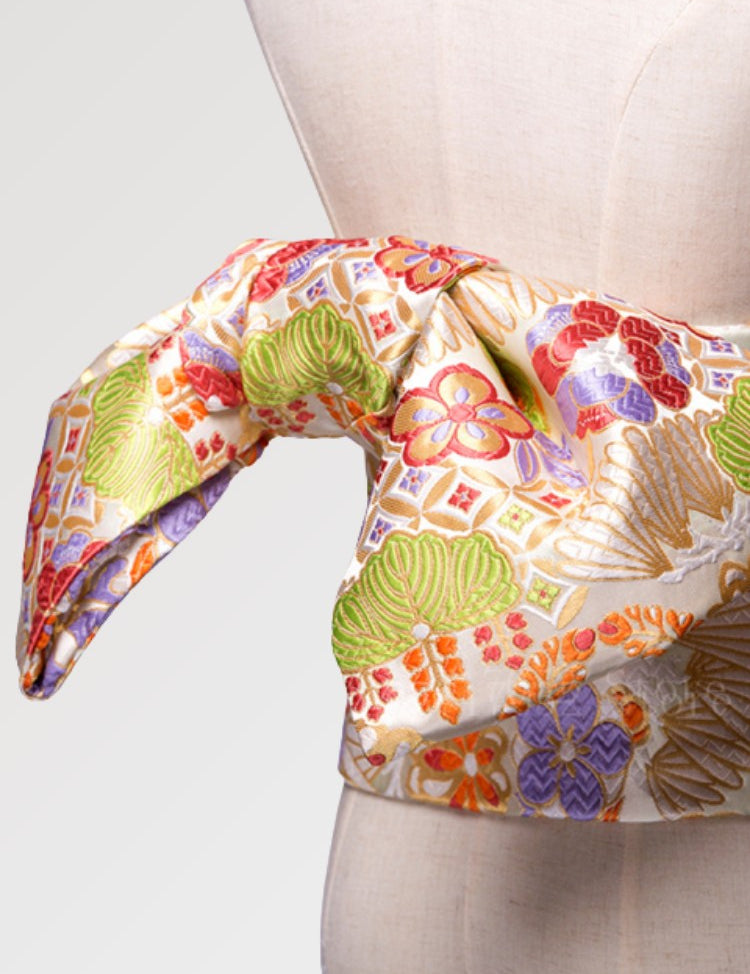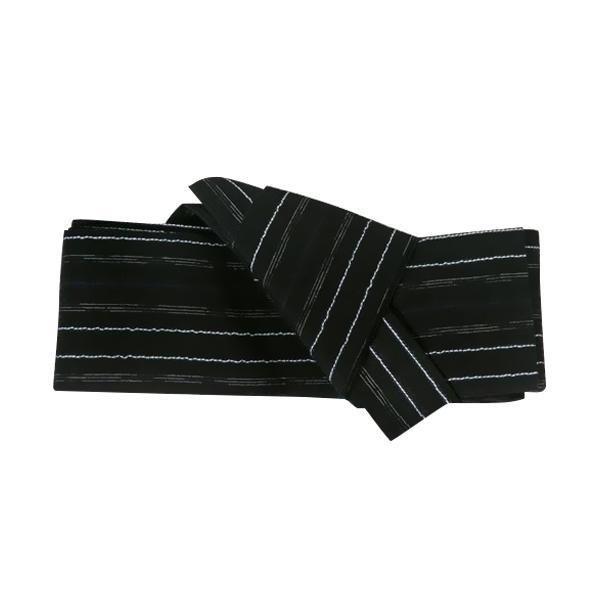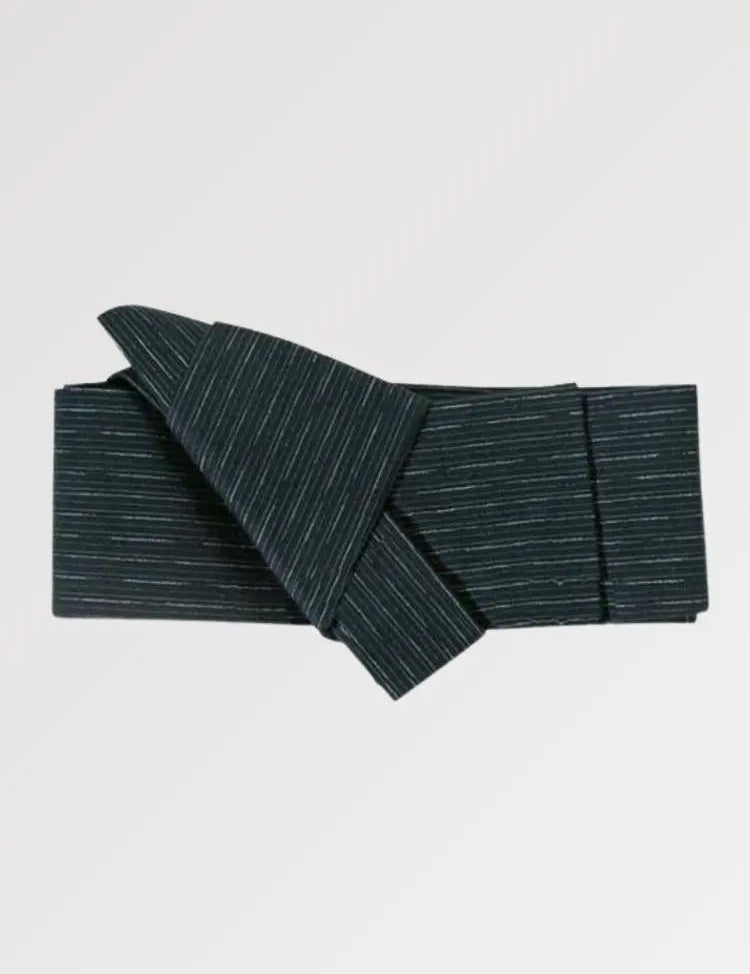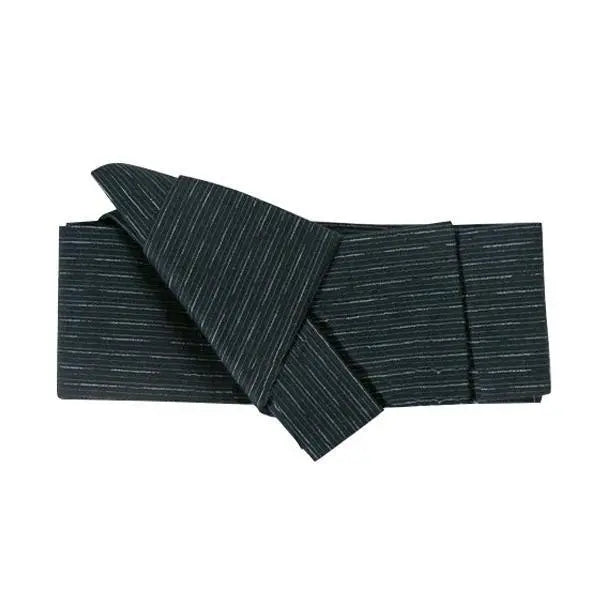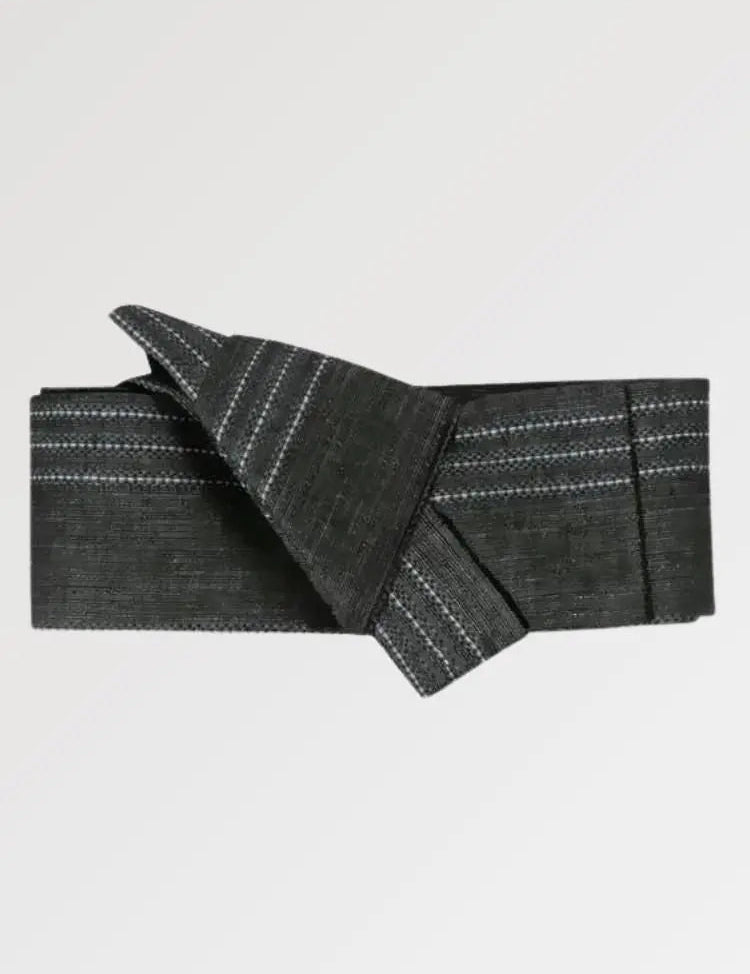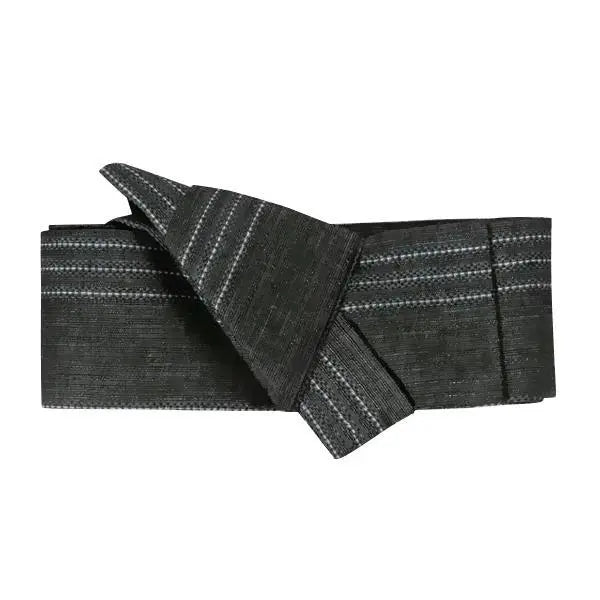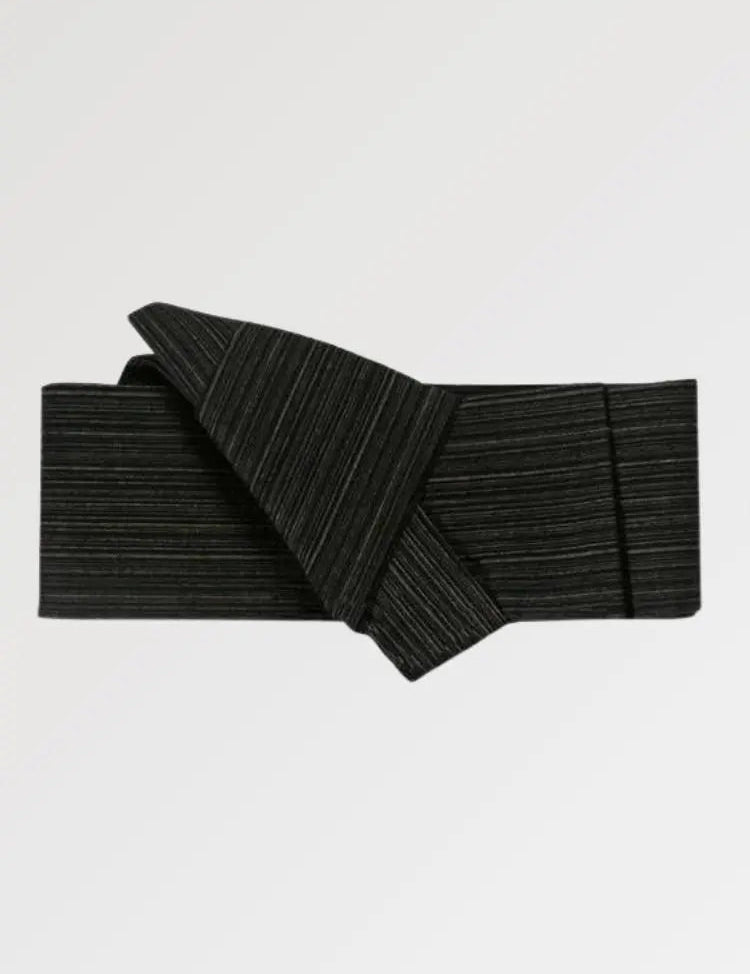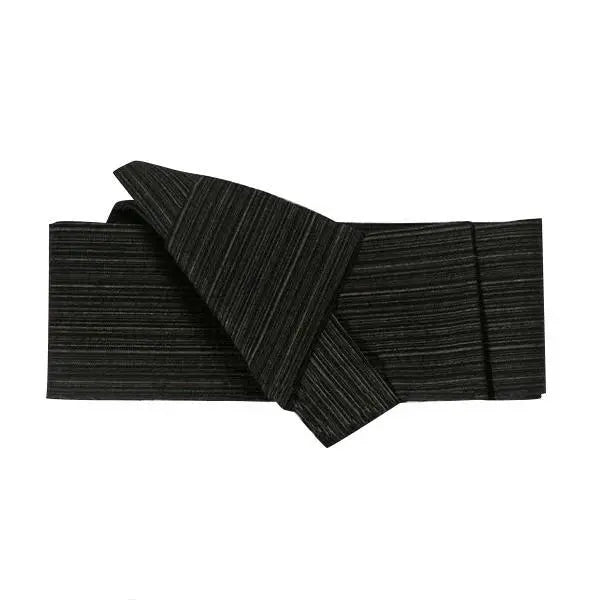Browse our large collection of obi belts, from women's obi belts to men's obi belts, you will find your happiness among our japanese belts!
The obi belt, never without a Japanese kimono
You want to know a secret? Your beautiful Japanese kimono, the star of the outfit, the quintessence of Japanese clothing, the hero of ancient fashion, is in fact an accessory in its own right. Want to know what this other thing is? Simply the traditional japanese obi belt. While we think of our belts as functional clothing, which can sometimes be a fashion statement, the kimono belt is much more than that.
Did you know that the japanese obi can actually be worth more than the entire kimono outfit? Did you know that the beautiful belt is a total creation that would have taken a craftsman hundreds of hours to make and is a masterpiece of textile art and precision? Of course, not all obi belts are the same but let's take a closer look at why and how these beautiful japanese textiles might just be worth more than your pair of Nike's!
Most obi produced today come from a region of Kyoto called Nishijin. This area has been the center of the Japanese textile industry since the 16th century. Nishijin is well known for its high quality silks and was used to provide textiles for the imperial courts and samurai lords. There is a style of silk known as Nishijin-Ori which is a weaving technique requiring great skill and is very expensive to produce.
It is incredibly woven and can have a 3D effect. The threads are often quite thick and usually come in gold tones, so it can also be very expensive. Many obi were once made from this extravagant silk. Buying one of these obi can cost up to 500,000 yen (4000 euros). When we tell you that it could be worth more than your pair of Nike, you know why!
What is the Japanese obi?
An obi belt is a long decorative belt that is wrapped around the body to wear a Japanese kimono or yukata. They do not have a fastener, but are tied together with a bow or other attractive knot. You guessed it, the obi is an essential piece of kimono to complete a perfect traditional outfit. When the night comes, trade in your kimono, untie your obi and put on authentic kimono pajamas to transform yourself into a true Geisha while maintaining unmatched comfort.
Japanese obi belts have been made of many materials including cotton and linen. Today, the most formal kimonos are made of silk, but polyester is very popular because it is easy to tie and maintain. The obi can be made of any fabric if it is strong enough to be pulled. Like the kimono itself, and any other garment for that matter, the fancier the obi, the more expensive the fabric used.
Obi belts for special occasions are made of brocade or silk and can often cost more than the kimono as described above. Nowadays, kimono makers and designers at the forefront of japanese fashion feel free to experiment with fabrics, so there are obi belts made of leather, denim, plastic, lace, etc.
The types of obi that exist
- Maru Obi: It was once the standard obi. It literally means circular/round/loop belt, as it is made of a strip of cloth folded in half, so that the front and back are identical. The maru obi is quite heavy, and the elaborately decorated half of the cloth will always face inwards and never be seen, which is why it is not as popular nowadays as it once was!
- Fukuro Obi: Today, when you think of a standard formal style traditional obi, you probably think of a Fukuro. They are made from a decorated strip of fabric, usually silk with another plainer lining inside. It means bag belt, because of the way it is sewn in two parts. For formal occasions, a fukuro obi is normally worn, although some can also be casual.
- Hanhaba Obi: Literally meaning half-width obi, as it was originally half the width of a fukuro obi. Nowadays, they tend to be a little wider than that because people are taller than they used to be. Hanhaba are more relaxed than fukuro obi and because of their width, they are easier to tie.
- Nagoya Obi: They are shorter than most other obi, and often have sections sewn together to allow them to be easily used for special knots, such as the Taiko Musubi (drum knot). The name comes from the city of Nagoya where their use was popularized.
- Obi Heko: They are softer, thinner and more like a scarf than other types of obi. They were originally part of the uniform of soldiers in Satsuma province in Kyushu in the early Meiji era, hence the name meaning young soldier.
- Kaku Obi: Are worn by men and are longer than women's obi, as men wrap them around the waist three times instead of two. Kaku obi are also narrower than women's obi, usually 10 cm wide. The name means straight, angular obi.
